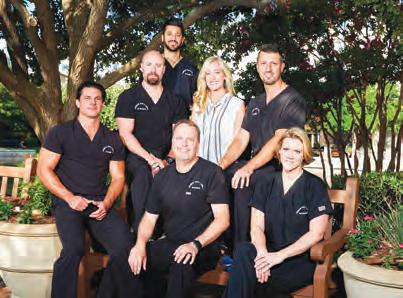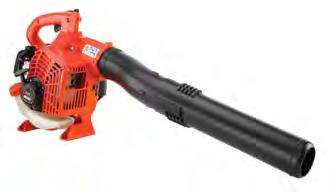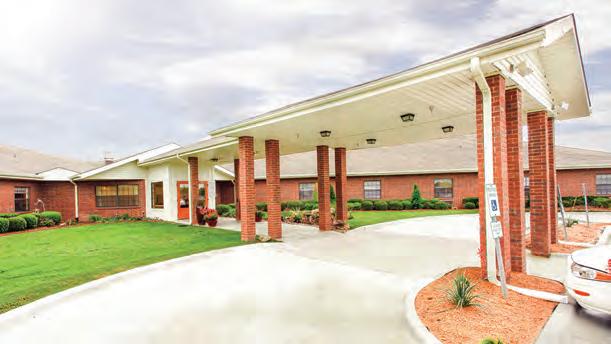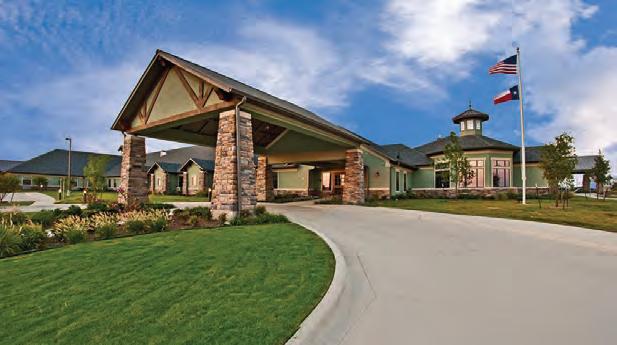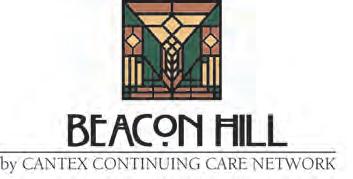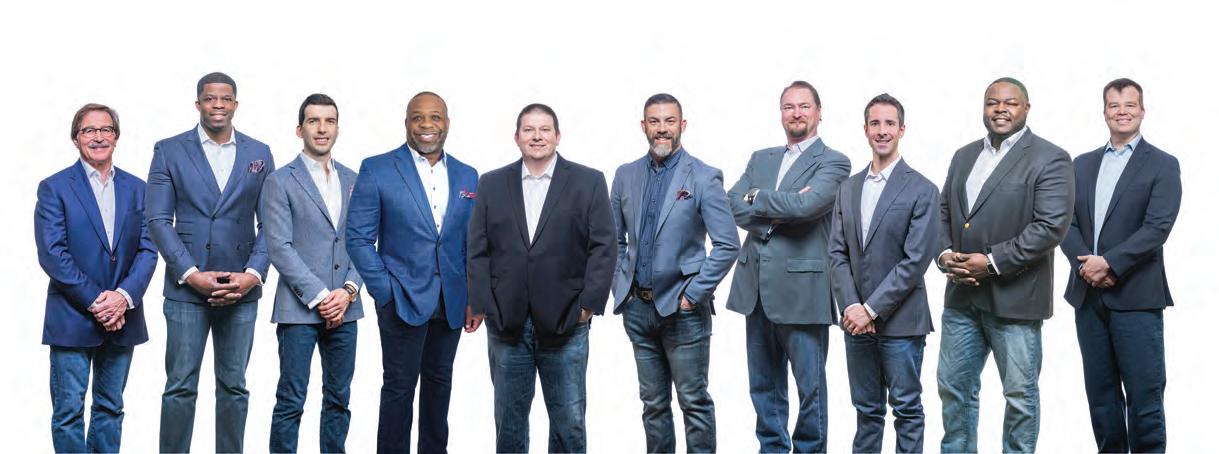More Inside
SHARON STONE RISING FROM THE RUBBLE AVOIDING AND MANIPULATING A DOWAGER’S HUMP
OVERCOMING AQUAPHOBIA: ADULTS LEARNING TO SWIM


SHARON STONE RISING FROM THE RUBBLE AVOIDING AND MANIPULATING A DOWAGER’S HUMP
OVERCOMING AQUAPHOBIA: ADULTS LEARNING TO SWIM

New Dawn in Sherman
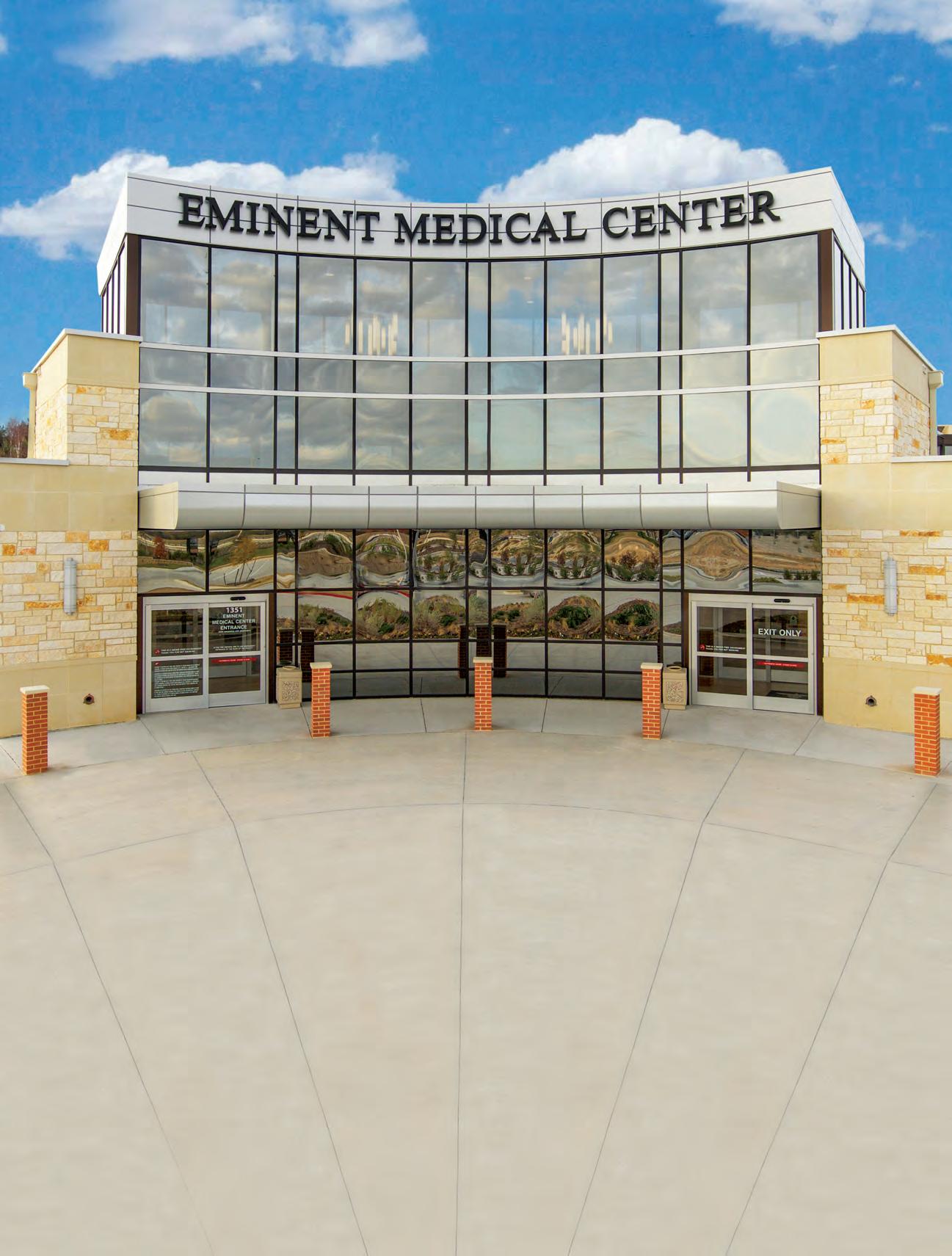

Pain
Orthopedic Surgery • Neurosurgery • Minimally Invasive Spine Surgery
Total Joint Surgery • Foot & Ankle Surgery • Hand Surgery
Gynecological Surgery • Plastic Surgery




With a clear focus on quality, reliability and timely completion, Plyler Construction works with owners of such diverse commercial, institutional and industrial projects as manufacturing, warehousing, educational, retail, support and religious facilities to provide the most appropriate delivery method. Plyler offers pre-construction services, experienced construction management, a variety of delivery methods, equipment setting and in-plant maintenance services.
We work with our clients, not just for them. That’s just one of the reasons architects, designers, and industrial and commercial project owners from across the nation have looked to Plyler Construction for more than a half-century for solutions to their building needs. At Plyler Construction, we build relationships.
General Construction
Pre-Construction
Design-Build Capabilities
Construction Management
MEP Mechanical
Electrical
Plumbing
HVAC
Equipment Setting
Steel
Steel Fabrication
Steel Erection
Specialty Fabrication
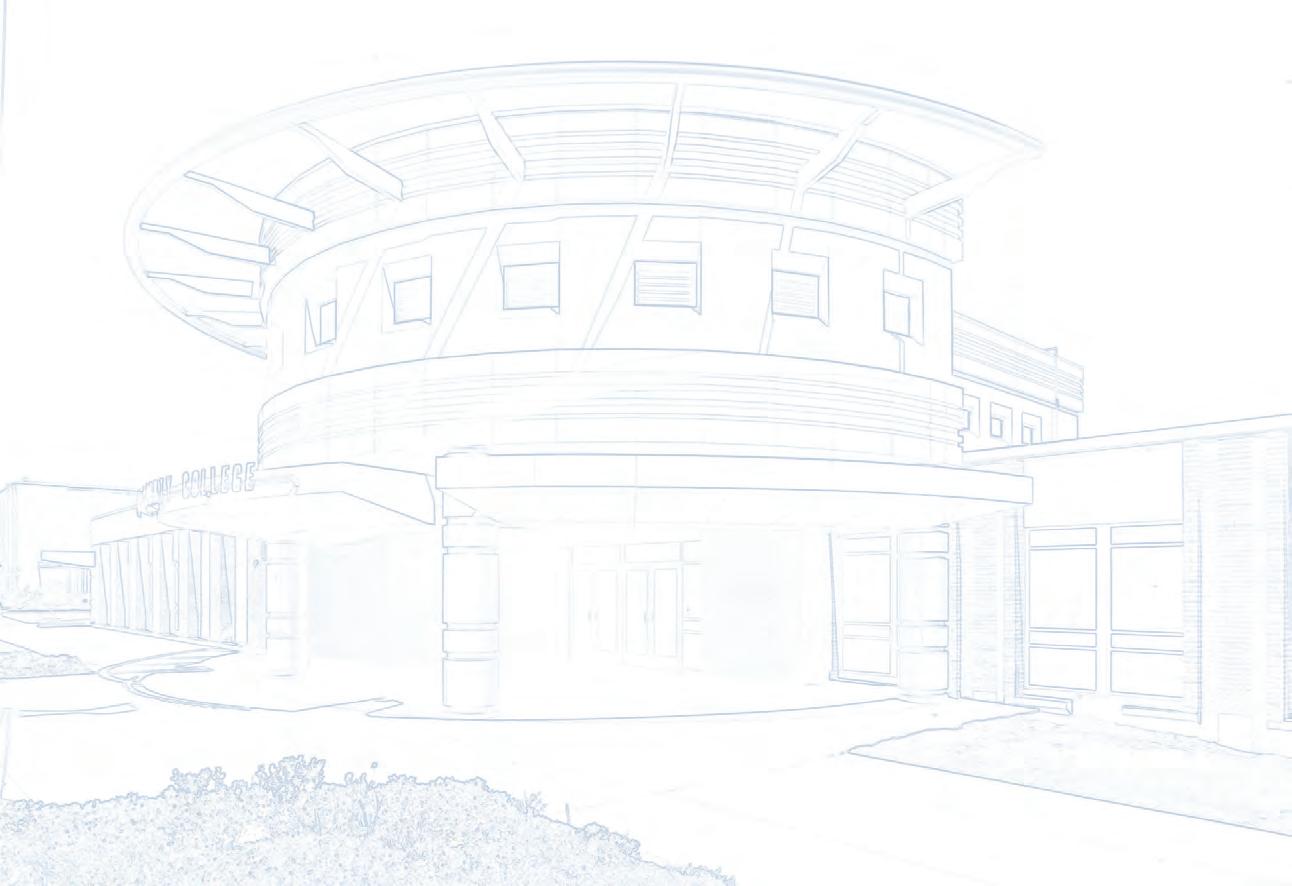

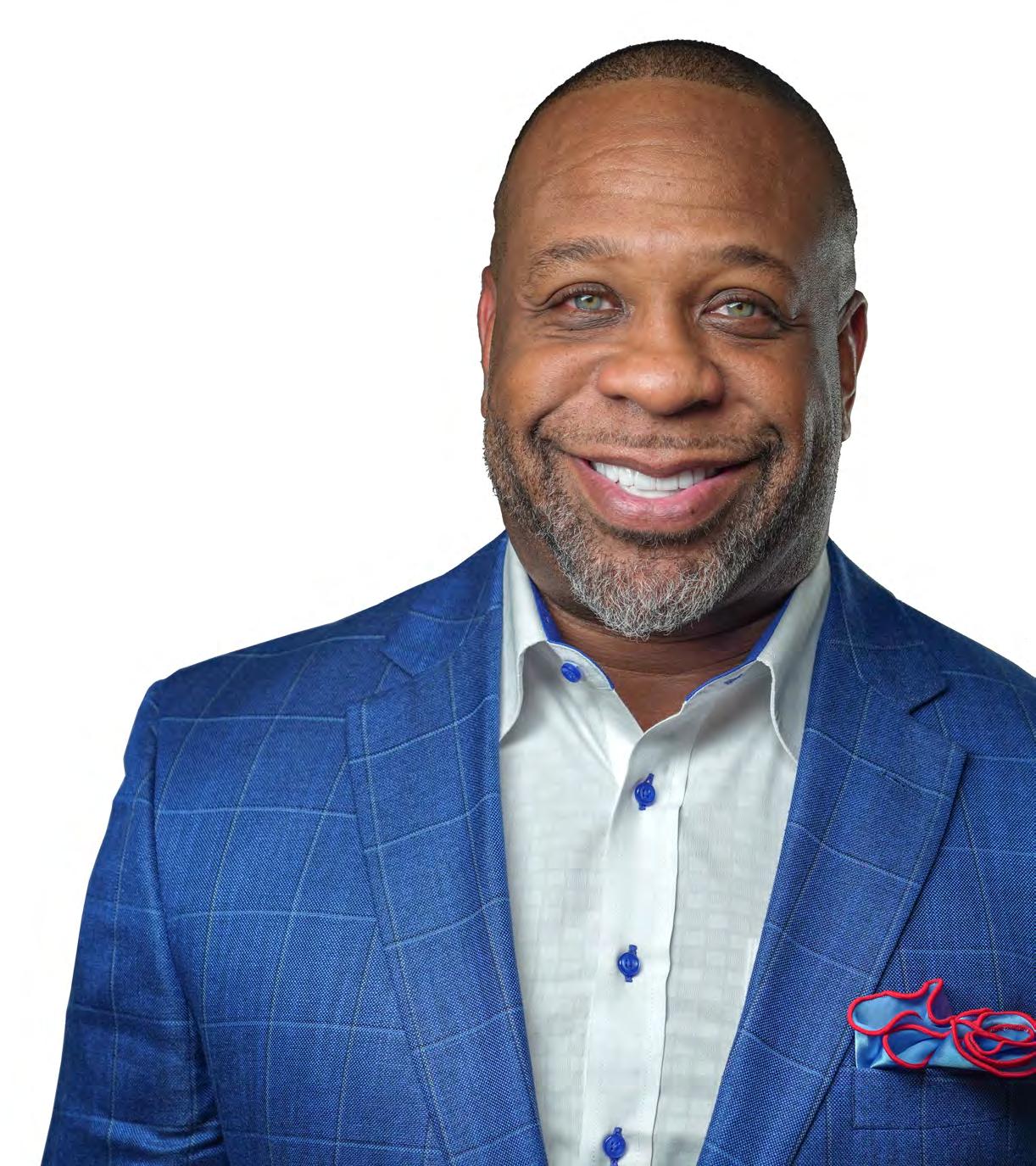

In this edition, we’re met with captivating tales of triumph, resilience, and rejuvenation. From the bustling corridors of Hollywood to the vibrant streets of Sherman, the life stories of Sharon Stone and Mayor David Plyler remind us of the enduring human spirit, the beauty of perseverance, and the essence of truly living well.
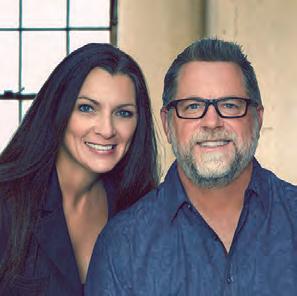
Sharon Stone’s journey, from meteoric stardom to confronting the precipice of mortality and then resurging, is a testament to the fact that life’s greatest challenges often precede its most profound comebacks. After a debilitating brain hemorrhage, Stone’s meticulous self-awareness and unwavering spirit, coupled with the marvels of modern medicine, brought her back from the brink. Beyond her accolades on the silver screen, her tenacity in the face of life-altering adversities stands as an indelible lesson in resilience.
Similarly, the transformative tale of Sherman, Texas, under the dynamic leadership of Mayor David Plyler, epitomizes the concept of collective endeavor and progress. The city, once in the shadows of larger Texan metros, is now flurishing, drawing in global giants and uplifting its community. Mayor Plyler’s role as a proactive facilitator has led to monumental economic strides, but equally notable are his endeavors for community safety, wellness, and preservation of Sherman’s rich history.
Living well isn’t just about prosperity or health in isolation. It’s a blend, a balance. As we delve into other features this month, you’ll fid insights into managing physical aspects of well-being, such as avoiding and manipulating a dowager’s hump, a common yet preventable condition. Additionally, we dive into the heartening tales of individuals overcoming aquaphobia, fiding joy and freedom in the embrace of water.
Life, in all its multifaceted splendor, offers us trials and triumphs. Each story, be it of a celebrated actress or a visionary mayor, underscores the signifiance of embracing every moment, every challenge, and every opportunity. It’s not just about living; it’s about living well.
Join us in this journey of discovery, growth, and inspiration.
Happy reading!
 SAM AND SPRING HOUSTON
SAM AND SPRING HOUSTON
PRESIDENT & CEO SAM HOUSTON
VICE PRESIDENT & CFO SPRING HOUSTON
EDITOR, FEATURE WRITER & SOCIAL MEDIA SONDRA BARR
ART DIRECTOR VANESSA FRYER
ACCOUNTS MANAGER JENNIFER BEAVERS
WEBSITE LYDIA ROGERS
ADVERTISING & SALES
TEXAS: Denton County, Dallas County, Collin County
TEXAS & OKLAHOMA: Texoma Area
WRITE TO US:
Tell us who you would like to see featured on the cover, or what subjects you would like covered in upcoming editions of LIVING WELL MAGAZINE at info@livingwellmag.com
SUBSCRIPTIONS & CUSTOMER INQUIRIES
Houstons of Dallas Publishing, Inc. 102 E. Broadway, #901 Prosper, TX 75078
www.LivingWellmag.com
Phone: (214) 507-1000 Fax: (855) 248-2132
LIVING WELL MAGAZINE is a source for quality educational articles on living a healthy, vibrant life. Our focus is on connecting our readers with the latest information on a host of topics relevant to their evolving life. From cutting edge medical news and procedures to top-tier financial, legal and lifestyle information. Connecting readers to leading medical and business professionals in their community in Texas and Oklahoma.
All advertisements in this Magazine are placed by third parties. We do not control or endorse either the advertisements or their content. Further, we
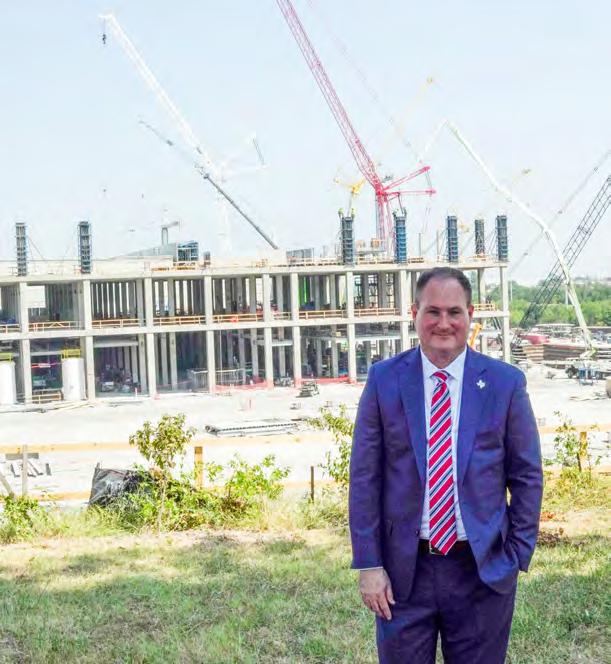

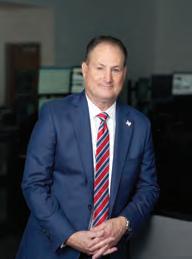
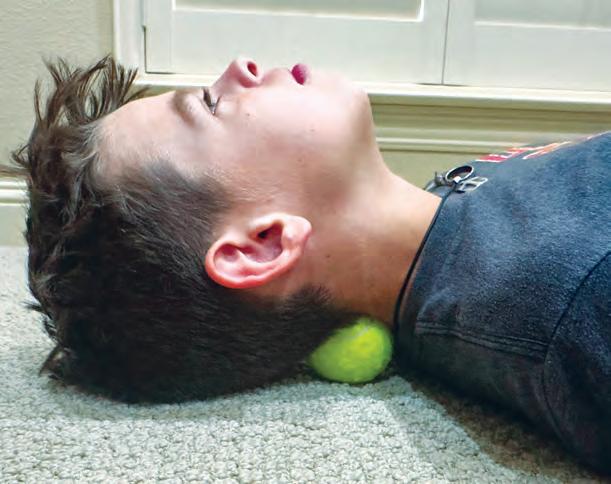
Dr. Courtney is a board-certified orthopedic spine surgeon located in Plano, Texas. A Louisiana native, he attended Louisiana State University for medical school, and completed residency at Texas A&M followed by a fellowship at the Florida Neck and Back Institute.
SPECIALTIES:
• Back Pain
• Neck Pain
• Spine Pain
• Disc Replacement
• Microdiscectomy
• Spinal Fusion
• Minimally Invasive Surgery
• Steroid Injections
• Physical Therapy
“I believe in treating each of my patients with honesty, dignity, and respect. My patients come away from our shared interactions feeling confident, assured that they are truly in the best hands. Throughout my career, I have remained laser-focused on providing world-class care and innovation to the patients I treat on a daily basis. I look forward to getting to know you!”
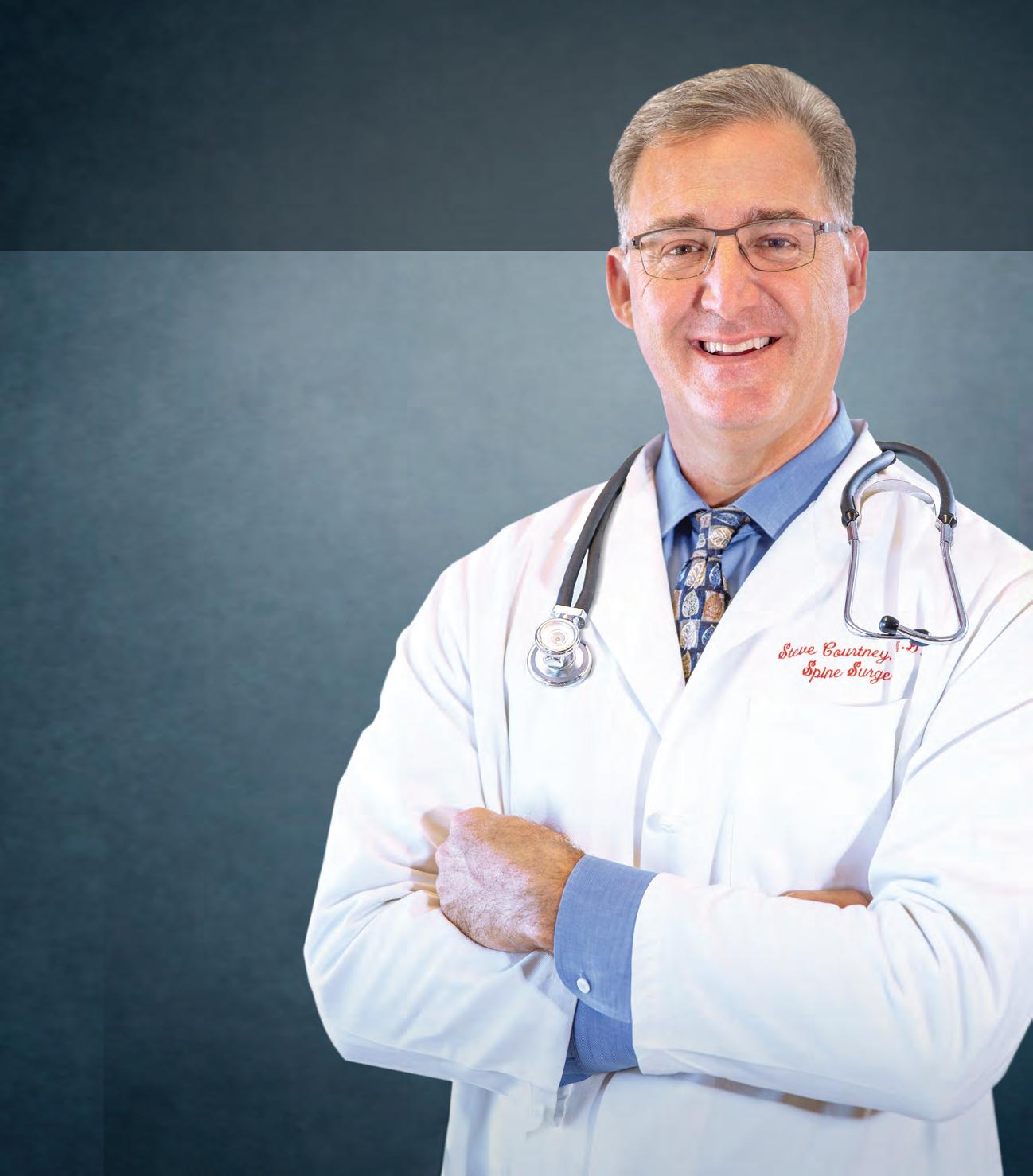




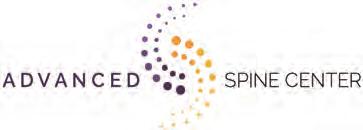
YOU DON’T HAVE TO WORK AS HARD TO HEAR YOU CAN REDUCE RISK FOR COGNITIVE DECLINE*

YOU CAN ENJOY TIME WITH FRIENDS & FAMILY AGAIN
Research shows that hearing loss decreases social activity and impacts quality of life. People who are less socially active are more likely to experience cognitive decline.** The Sound quality of WIDEX MOMENT hearing aids helps you get back to participating in life again, one moment at a time.***
“ Imagine hearing without effort, like you did years ago! We want you to hear well -- and be well. ”
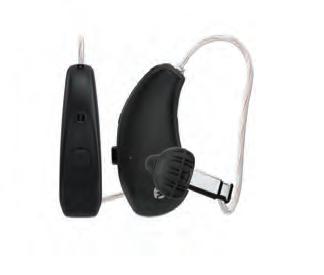
$500 Off a set of premium digital hearing instruments. Some restrictions apply. It’s worth your time. It’s about your life.
*Sarant J, Harris D, Busby P, Maruff P, Schembri A, Lemke U, Launer S. The Effect of Hearing Aid Use on Cognition in Older Adults: Can We Delay Decline or Even Improve Cognitive Function? Journal of Clinical Medicine. 2020; 9(1):254. https://doi.org/10.3390/jcm9010254. **Hwang et al, 2018 ***Balling et.al; Hearing Review 2021

Jill Sheppard, B.S., SLP/Audiology, Licensed Fitter and Dispenser of Hearing Instruments (LFDHI) and owner of HearCare & Associates.
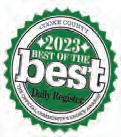

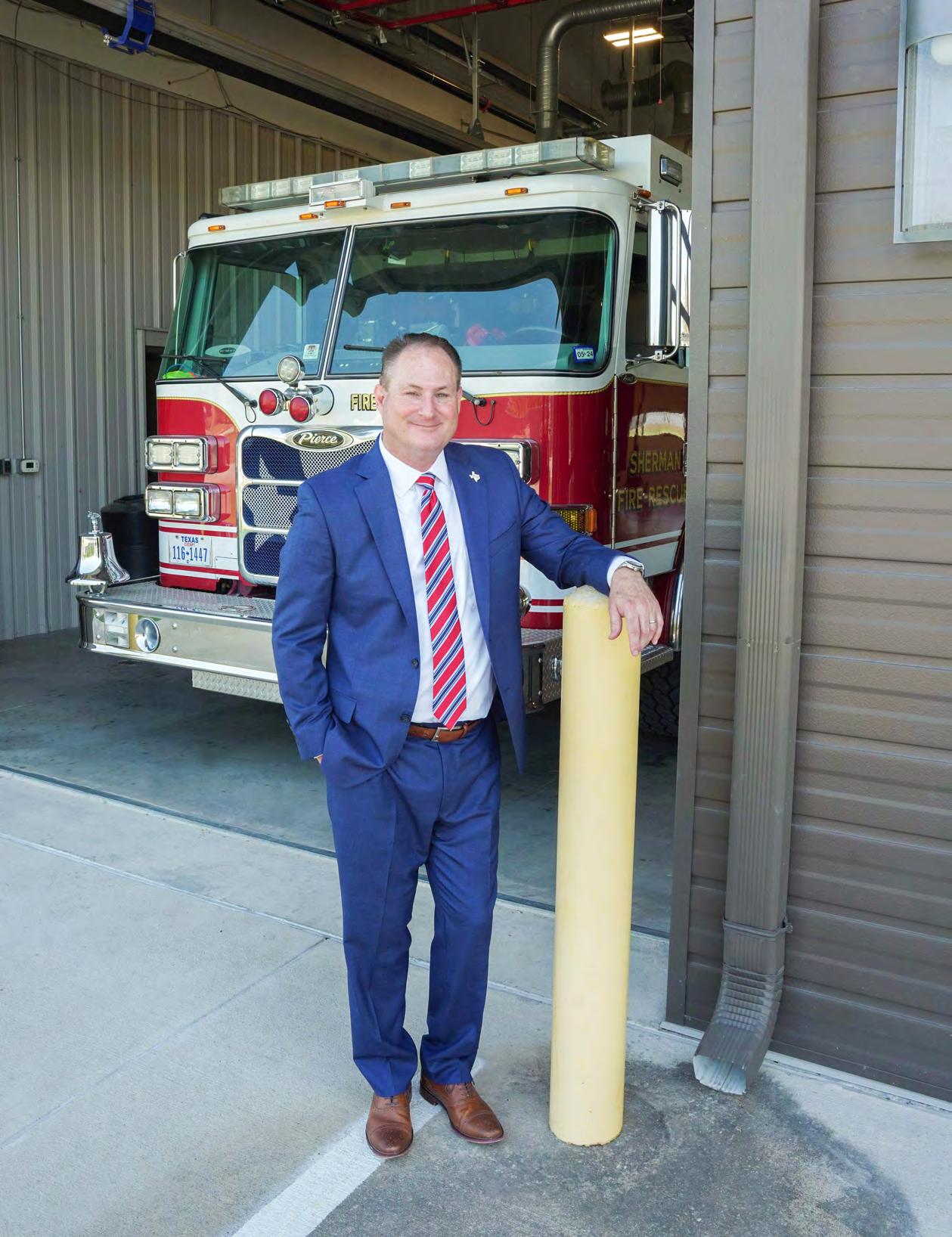
Sherman, often eclipsed by the urban dazzle of Dallas-Fort Worth, is currently under the spotlight, boasting milestones of progress and envisioning a promising horizon under the dynamic leadership of Mayor David Plyler.
At the heart of these leaps is an infusion of international interest and substantial economic investments. Two behemoths of the silicon chip industry, Texas Instruments and GlobalWafers Co., have anchored their trust and funds in Sherman, totaling an astounding $35 billion.
Mayor Plyler points out the collective effort behind Sherman’s recent transformative undertakings. Under the vigilant guidance of City Manager Robby Hefton, backed by a steadfast city council, and supported by the predominantly pro-business ethos of the city staff, they formed an indomitable force. Their dedication was evident when they steered Texas Instruments towards Sherman even when competing against global hubs like Singapore for the company’s next plant.
However, the journey to this monumental success wasn’t shouldered by city hall alone. An incredible amount of collaboration was woven into the fabric of this endeavor. The community wholeheartedly participated. Local governmental bodies including Grayson County, along with educational institutions like Sherman Independent School District, Grayson College, and even the Texas governor’s officeach went above and beyond in their strategic strengths.
Plyler clarifieshis role as a facilitator in these negotiations. He also emphasizes the valuable contributions from the Sherman Economic Development Corporation (SEDCO), revealing that the crucial numbers and strategies were primarily driven by the team at SEDCO.
President Kent Sharp and his team’s insights and determination were instrumental in understanding the weight of what was at play. “The magnitude of a $30 billion investment in a city with a total tax value of just $4.5 billion is not just game-changing; it’s historic,” Plyler says.
“I don’t know of any Texas city that’s done what we’ve done, ever. With a population our size, usually a large manufacturer is drawn to Austin or San Antonio. Our location, reasonably close to the Metroplex, ample water resources, and our easy way of living is very attractive to these international businesses, plus our very motivated work force is something else we are able to offer. So, all things added up and pushed them our way.”
“We didn’t just aim to compete; we aimed to seal the deal,” says Plyler, underscoring Sherman’s proactive approach. From the governor’s proactive support in negotiations to the unifid efforts of local to state governments, the collective intent was clear—to boost Sherman’s growth and reputation. “Crafting such a competitive package was no easy feat. It took grit, vision, and unparalleled teamwork. And seeing it all come together for Sherman’s bright future? That’s nothing short of remarkable,” says Plyler.
Subsequent to Texas Instruments, securing another signifiant investment from GlobalWafers Co. added another feather in Sherman’s cap. These generational projects are not merely about fiancial gains. They touch the very essence of the community. By creating numerous jobs, they upliftthe living standards of the citizens, offering them better opportunities and a brighter future. Addressing the issue of poverty at its core, such massive investments become a beacon of hope and progress for the entire community.
Sherman’s strategic efforts have not only attracted marquee names in high-tech industries but have also paved the way for a cascade of ancillary businesses. Plyler observes, “What we’re fiding is that suppliers, contractors, and other stakeholders are converging on Sherman. An ecosystem of high-tech enterprises is burgeoning right here. Witnessing this evolution and the growth of an industrial symbiosis in our city is truly fascinating.”
The duality of Sherman’s charm—its serenity combined with its proximity to the Metroplex—is a signifiant pull factor. But it’s the city’s forward-thinking, epitomized by its proactive infrastructural initiatives and its welcoming stance towards businesses, that ensures Sherman isn’t just growing; it’s flurishing sustainably.
The burgeoning investments in Sherman have brought about transformative changes, both in terms of opportunities and challenges. One of the most conspicuous challenges that has risen to the forefront is infrastructure development.
“We’ve embarked on a slew of infrastructure enhancements, from laying down water and sewer lines to expanding our water plant and even constructing a new sewer plant,” says Plyler. “I can’t say enough about our city of Sherman engineers. They have been instrumental in assembling the right consultants, designing the projects, and steering


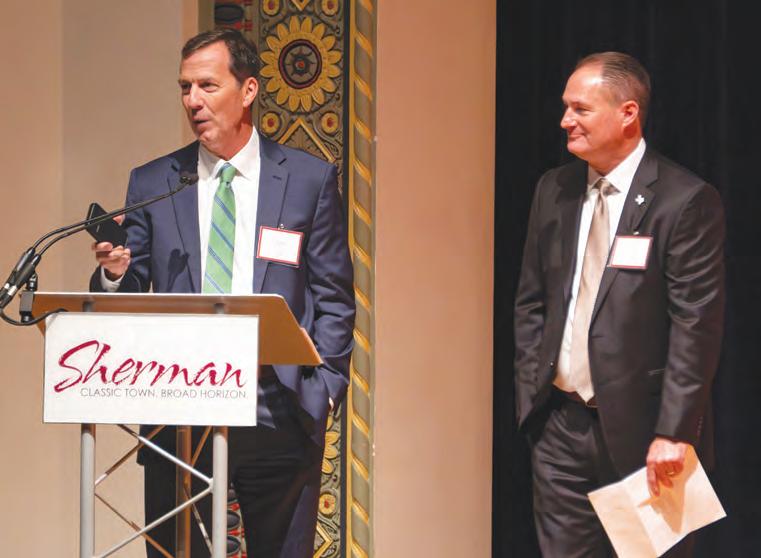
them out for bid. It’s undeniable that these developments have required a colossal effort on our part, but we anticipated this. And undoubtedly, the monumental benefits for our community far eclipse the challenges.”
Mayor Plyler’s dedication to the Sherman community is evident not only in the infrastructural advancements but in the emphasis on safety as a foundation for enjoyment. While he takes pride in the new police and fie stations, he views them as more than just buildings—they’re a promise of security. “We’re a city of law and order,” he says.
Ths declaration isn’t just a nod to maintaining safety, but a broader assurance to numerous corporations making Sherman their home. These businesses look for stability and predictability, and according to Plyler, Sherman is up to the task. “There’s a laundry list of expectations these corporations have, and law and order certainly rank high.”
As a result of this bolstered safety infrastructure, residents can now truly relish in the enhanced parks, trails, and the recently inaugurated pickleball pavilion. “We can have wonderful parks, but if people are afraid to use them, their value diminishes,” he says. Ths holistic approach underlines Plyler’s commitment to pairing quality amenities with a secure environment.
In line with the emphasis on community security and enhancement, Sherman’s vision goes beyond merely recreational amenities. As Plyler points out, “The school district passed a roughly $550 million bond, and they are replacing a lot of dated schools. The stadium is part of the package. Everyone is riding this new influx of folks.” At a time when many cities face the dilemma of raising funds versus residents’ well-being, Sherman stands out. Remarkably, the school district achieved this without any increase in property taxes.
“They’re able to do that because of the new growth in the city. That’s impressive, to have that kind of money available for new facilities without raising taxes,” says Plyler. Ths deft management not only underscores the city’s commitment to education and community development but also exemplifiesthe delicate balance of growth and fiscal responsibility that Sherman has embraced.
Inspiring day at the City of Sherman Mayor’s Roundtable with Governor Greg Abbott as the keynote speaker, discussing economic development, innovation, and the future of Texas. City Manager Robby Hefton and Mayor David Plyler The largest economic development project in Texas history is underway in south Sherman. Texas Instruments has broken ground on a new, $30 billion microchip production facility that will be among the largest factories in the United States once complete.Crafting such a competitive package was no easy feat. It took grit, vision, and unparalleled teamwork. And seeing it all come together for Sherman’s bright future? That’s nothing short of remarkable
The vision for Sherman isn’t restricted to mere economic expansion; it delves deep into preserving the city’s inherent charm and unique identity. Recognizing the potential challenges that rapid growth can present to a city’s character, Plyler and the city council have been proactive. They’ve implemented well-thought-out planned development strategies, grounded in comprehensive ordinances that ensure new developments harmoniously integrate with Sherman’s foundational ethos.
“We, as a council and city staff, have instituted specificstrategies for planned developments,” he says. “These strategies are designed to ensure that as new neighborhoods spring up, with contemporary amenities and distinct design elements, the heart and soul of our city remains unchanged.”
Ths meticulous approach allows each new development to flurish with its individual character, while simultaneously ensuring that iconic areas like downtown Sherman and the central business district remain untouched by the hands of time. “It’s a balance that allows us to introduce modernity while still holding onto the same aesthetics and character that have endeared Sherman to its residents for generations,” says Plyler. The result is a seamless blend of the old and the new, where progress respects tradition, and the city’s legacy shines through.
As Mayor Plyler nears the conclusion of his term next November, his reflctions on legacy are multifaceted. Beyond the notable infrastructural developments and economic strides, one project holds signifiant emotional weight for him: the transformation of the old Highway 75. Set to open early next year, this overhaul isn’t just about modernization; it’s about safety. Plyler expresses a palpable sense of pride and relief, saying, “Am I proud that we will fially have a safe highway running through the middle of Sherman? Absolutely. We had a number of fatalities on our old highway, so seeing the completion of the new Highway 75 brings immense satisfaction.”
But this highway isn’t the only endeavor close to his heart. The chip plants, particularly, stand out as remarkable achievements. “That’s
something I’m immensely proud of,” he emphasizes, “It’s truly put Sherman on the international stage. We’re now receiving calls from businesses located all over the country and overseas, especially from traditional chip-making countries.”
The emergence of Sherman on the international business map, especially with the introduction of the silicon chip plants, stands as a testament to Plyler’s leadership. However, he is quick to deflct credit. “Our global prominence and community upliftment are fruits of not just my tenure, but decades of dedication by previous administrations. Our dedicated city employees, hardworking city staff, and the unwavering spirit of our populace have been the real engines behind this success,” he says.
As the conclusion of Mayor Plyler’s term approaches, many are intrigued about what lies ahead for him. While he remains undecided about his next chapter, his commitment to service remains undiminished. To those who will follow in his footsteps, Plyler offers thoughtful counsel: “There’s a lot that goes into deciding what’s right for our city. Often, the best decisions naturally rise to the forefront. Work diligently on projects that genuinely serve the community. Always strive for improvement and continue to honor the obligation we have to the citizens, aiming to provide them with a community that stands out as unparalleled.”
Sherman, once overshadowed, is now on the global map. With collaborative community endeavors and visionary leadership, Sherman is not just dreaming but realizing those dreams, redefiing its legacy as the burgeoning ‘Silicon Prairie’ of Texas.
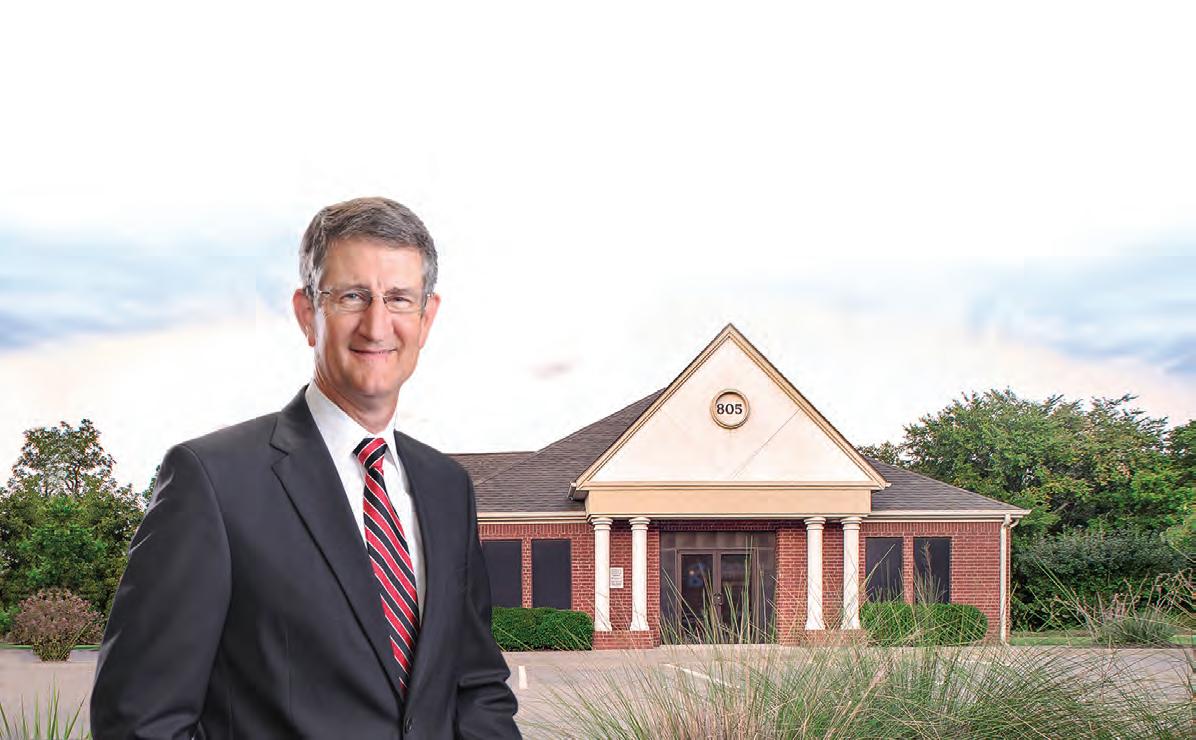


Back in 2006, Hal and Barbara had an unsettled feeling, but they couldn’t determine why. They were in excellent health. Hal was 85 and Barbara was 73. They had a modest estate consisting of a house and approximately $100,000 in savings. They rarely made withdrawals from their savings because their monthly income was more than enough for their needs. They had a close and trusting relationship with their children. Hal and Barbara knew their children were fiancially secure and were not counting on an inheritance. However, Hal and Barbara really wanted to make sure their estate would eventually be received by their children.
Hal and Barbara were anxious because they knew that their estate plan did not protect their assets from being depleted if one of them had to enter a nursing home. They also wanted to make sure that if either one of them had to go to a nursing home, their assets would be protected and available for the survivor. They didn’t have long-term care insurance and they knew Medicare would not pay for custodial care in a nursing home. When they had previously asked their accountant about how to protect their assets, she referred them to a Certifid Elder Law Attorney. So they decided to make an appointment.
The attorney explained all about how to fiance long-term care and make changes to their estate plan. He explained that if one of them had to enter a nursing home, their savings would fist be used up to pay for the required care and then the ill spouse would qualify for Medicaid, leaving the well spouse fiancially at risk. After considering several different alternatives proposed by their attorney, they decided to establish an irrevocable trust and put their savings in the trust.
They discussed the trust idea with their children and decided to appoint one of their sons as trustee to manage the trust. The trust would protect their savings from their future creditors and their children’s creditors, including if one of their children happened to experience a divorce. The giftto the trust would mean that Hal and Barbara would
not be able to qualify for Medicaid to pay for nursing home care for five years. If they remained in good health for over five years, their life savings would be completely protected if one of them had to enter a nursing home.
Their attorney included a provision in the trust that would allow their children to access the trust funds. The attorney explained that in the event Hal or Barbara unexpectedly had to enter a nursing home during the five year period, it would be possible to unwind the trust and qualify the ill spouse for Medicaid before the five year period was complete. An additional benefit was that their new estate plan would allow both of their estates to avoid probate. The trust would avoid probate and terminate (with the trust funds going to their children) upon the death of the survivor between Hal and Barbara. The attorney explained how they could change their house deed so that it would avoid probate. He also explained how their children could avoid probate regarding Hal and Barbara’s cars. They were pleased to learn that the legal fees saved by avoiding probate would more than pay for the cost of the trust.
Hal and Barbara experienced good health for the next seven years until early 2013 when Hal experienced a dramatic medical event and spent almost a week in the intensive care unit of a local hospital and then another couple of months in a local rehabilitation facility and nursing home. Although Hal has fially improved enough to return home, he is very weak and Barbara needs assistance with his care. While Hal was in the nursing home, the family was able to apply for Medicaid assistance because Hal and Barbara had contributed their savings to the irrevocable trust. Now their children are able to use the trust funds to pay for extra care that improves the quality of life of both Hal and Barbara. They have the peace of mind because they know that their life savings will be preserved for the rest of Barbara’s life even if Hal passes away. Further, at Barbara’s death, their life savings will benefit their children.
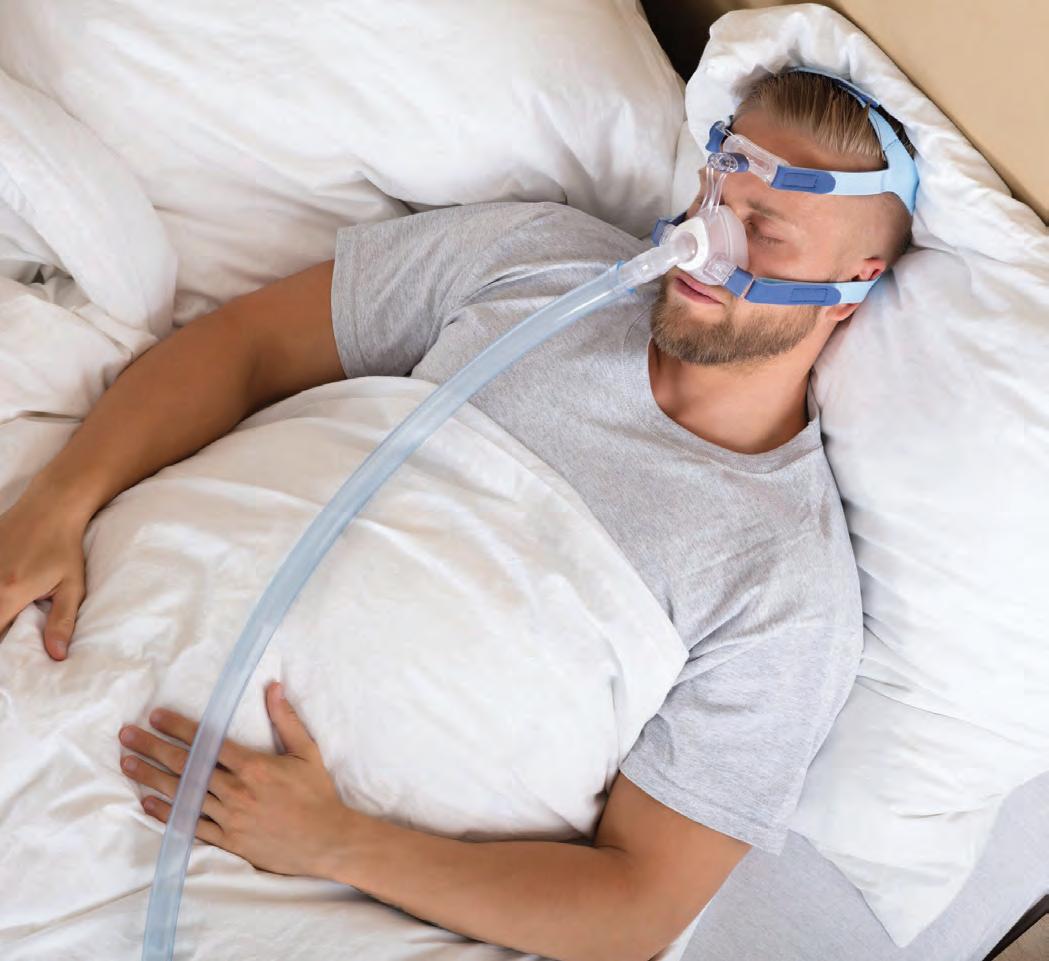
Obstructive sleep apnea (OSA) is a topic that is frequently covered in local and international news and advertising. Recent estimates suggest around one billion adults worldwide have been diagnosed. In the US, OSA is as common as diabetes and more common than asthma. More than 50% of those over 64 have a sleep problem.
There are two types of sleep apnea: central and obstructive. Central is less common, occurs when the brain fails to send the appropriate signal to the breathing muscles to initiate respirations. Obstructive is more common and occurs when air cannot flw into or out of the person’s nose or mouth although efforts to breathe continue. In a given night, the number of involuntary breathing pauses or “apnea events” may be as high as 20 to 30 or more an hour. These pauses are usually accompanied by snoring between apnea events, although not everyone who snores has this condition.
During these events the person in unable to breathe in oxygen and to exhale carbon dioxide, resulting in low levels of oxygen and increased levels of carbon dioxide. The brain senses this imbalance and triggers the upper airway muscles to open, which typically results in a loud snort or gasp. While they restart breathing, these arousals keep the patient from entering a deep sleep that is necessary for recovery (Stage 4 or REM).
The prevalence of sleep disturbed breathing is substantially higher in older males. However, there are other groups of people who are more likely to develop sleep apnea. These groups include persons of certain races, those who are overweight, those who have chronic illnesses or poor health, and those who smoke, drink, or use drugs.
If leftuntreated OSA can lead to serious health conditions, including physical, emotional consequences and an increase in accidents. The effects are excessive daytime sleepiness, poor concentration, irritability, possible depression, memory difficulties and increase stroke or heart attack risk. In the long term, untreated OSA can be linked to other medical conditions such as CHF, nocturnal arrhythmias, Type II diabetes, hypertension, and stroke.
Diagnosis is a critical step in managing sleep apnea, and there are several methods healthcare professionals use to test for it.
• CLINICAL EVALUATION: The first step in diagnosing sleep apnea is typically a clinical evaluation. You will discuss your symptoms, medical history, and lifestyle factors with a healthcare provider. Be prepared to share information about your sleep patterns, daytime fatigue, and any other symptoms you may have experienced, like loud snoring, choking or gasping during sleep, and frequent awakenings.
• EPWORTH SLEEPINESS SCALE: To assess daytime sleepiness, healthcare professionals often use the Epworth Sleepiness Scale. This questionnaire asks patients to rate their likelihood of falling asleep in various situations, providing insight into the extent of daytime sleepiness.
• SLEEP DIARY: Keeping a sleep diary for a few weeks can also help in the diagnosis. Document your bedtime, wake time, naps, and any sleep-related symptoms. This information aids in identifying patterns and potential triggers.
• HOME SLEEP APNEA TEST (HSAT): For many individuals, the next step in diagnosing sleep apnea is the use of a Home Sleep Apnea Test (HSAT). This is a portable device that measures important parameters during sleep, including airflow, oxygen levels, and respiratory effort. It is less comprehensive than a full polysomnography (in-lab sleep study) but can be a more convenient and cost-effective option.
• POLYSOMNOGRAPHY (IN-LAB SLEEP STUDY): When the results from a home sleep test are inconclusive or when a more comprehensive evaluation is needed, healthcare providers may recommend a polysomnography. This is an in-lab sleep study conducted in a specialized sleep center. During a polysomnography, numerous parameters are continuously monitored, including brain waves, eye movement, muscle activity, heart rate, and breathing patterns. It is considered the gold standard for diagnosing sleep apnea and other sleep disorders.
• CONTINUOUS POSITIVE AIRWAY PRESSURE (CPAP) TITRATION: Sometimes, a polysomnography may involve a CPAP titration study. This test helps determine the optimal air pressure setting for a CPAP machine, which is commonly used to treat sleep apnea. During the study, the technician adjusts the CPAP machine to find the most effective pressure to keep your airway open.
• MULTIPLE SLEEP LATENCY TEST (MSLT): If there is a suspicion of another sleep disorder in addition to sleep apnea, a Multiple Sleep Latency Test may be recommended. This test evaluates daytime sleepiness by measuring the time it takes you to fall asleep during several scheduled naps.
• ACTIGRAPHY: In some cases, actigraphy may be used to monitor your sleep patterns over an extended period. This small device, usually worn on the wrist, records movement and light exposure to estimate sleep-wake cycles. It provides valuable information on sleep quality and can help identify circadian rhythm disorders.
In cases of mild sleep apnea, certain lifestyle changes can sometimes achieve positive results and are often the fist line of defense. These changes could include:
• WEIGHT LOSS: Obesity is a significant risk factor for sleep apnea. Shedding excess pounds can help reduce the severity of symptoms.
• ORAL APPLIANCES: Dentists can create custom oral appliances that reposition the lower jaw and tongue to keep the airway open. These devices are particularly useful for individuals with mild to moderate sleep apnea or who cannot tolerate CPAP.
• POSITIONAL THERAPY: For individuals whose sleep apnea is primarily position-dependent, sleeping on one’s side can be encouraged to prevent airway blockage.
• AVOIDING ALCOHOL AND SEDATIVES: These substances can relax the muscles in the throat, exacerbating sleep apnea.
• CONTINUOUS POSITIVE AIRWAY PRESSURE (CPAP) THERAPY: CPAP is a highly effective treatment for moderate to severe sleep apnea. It involves wearing a mask over the nose or mouth that delivers a constant stream of pressurized air to keep the airway open during sleep. This prevents the interruptions in breathing that characterize sleep apnea. While CPAP is effective, some patients may find it uncomfortable or claustrophobic.
• BI-LEVEL POSITIVE AIRWAY PRESSURE (BIPAP): Similar to CPAP, BiPAP therapy provides two levels of air pressure: a higher level for inhalation and a lower level for exhalation. This approach is sometimes preferred for those who find CPAP challenging to tolerate.
• SURGERY: In cases of severe sleep apnea or when other treatments prove ineffective, surgical intervention may be necessary.
• NASAL EXPIRATORY POSITIVE AIRWAY PRESSURE (EPAP): EPAP devices are small, disposable valves that fit over the nostrils. These valves create resistance to exhalation, helping to keep the airway open during sleep.
• INSPIRE THERAPY: Inspire therapy is an implantable device that monitors breathing patterns and stimulates the hypoglossal nerve to keep the airway open during sleep. This treatment is reserved for individuals with moderate to severe sleep apnea who are not responsive to other therapies.
• TREATMENT OF ASSOCIATED CONDITIONS: Managing conditions that contribute to sleep apnea, such as allergies or hypothyroidism, can also help improve symptoms.
The goal of your medical provider is to work with you to determine the best interface that will allow you to sleep comfortably. Consulting a healthcare professional is crucial to determine the most suitable approach and to ensure successful management of sleep apnea, leading to improved sleep quality and overall well-being.
When George Aune’s wife wanted him to retire, he had one question: “What am I going to do?”
He had a situation with his family he wanted to contribute to, while his wife was serving on the advisory council for Home Hospice. He could read the joy in Maggie’s demeanor and what it meant to be a part of serving there
George retired and applied for the volunteer board of directors at Home Hospice. “It’s wonderful to be associated with that group of people,” he says. “ They’re very generous with their time and their commitment to the people they serve. I’ve been overwhelmed with the dedication they have to their mission.” And the mission has become part of George, after serving four years as a board member and the immediate past president.
He’s witnessed families go through some of the hardest times of their lives, and knows the difference Home Hospice makes in that fial journey for their loved one “You’ve got to feel for the people who have family and friends that require hospice, that sadness and the grief,” George said. “And Home Hospice is better equipped to deal with what the patient and family are going through and that makes a difference.”
Volunteering at the non-profit Home Hospice is starkly different for George than working in the corporate world. He watches talented

healthcare professionals, constantly amazed at their selflesness. He knows they could earn six figues in the corpo rate world, but for them, it’s not solely about their vocation. It’s about their passion. George said. “You can hear how important it is to them, in the way they talk about Home Hospice and what they do.”
An army veteran who saw service duty in Vietnam, George is currently volunteering to visit a grand WWII veteran. Volunteering to visit the man on a regular basis feeds George’s soul. “I love to play golf, but I get more enjoyment out of volunteering with Home Hospice than I do playing golf and golf has been my passion for 45 years,” he said.
He highly recommends volunteering with Home Hospice. “Although you think volunteering might be time away from what you enjoy, you will fid gratifiation in it beyond anything else. You’ll experience something you’ve never experienced before.”
To volunteer, call us at 903-868-9315 and experience a difference.

JUST BECAUSE DAYS ARE LIMITED, QUALITY OF LIFE SHOULDN’T BE.
We are your neighborhood hospice helping patients and families find loving care with unparalleled skill. Surprisingly, perhaps, there are still opportunities to experience joy. Governed by community leaders, funded by grants and gifts, we are an award-winning hospice, providing end-of-life care for you and support for those you love. Let us be of assistance during this time when every moment is more precious than ever.
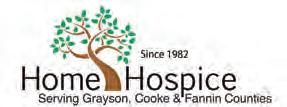




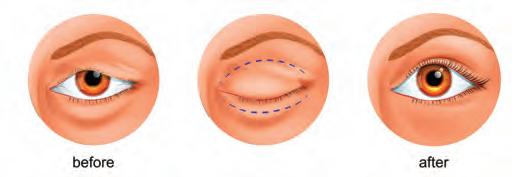
The fist signs of aging usually take place around the eyes. With injectables such as Botox and dermal fillers, subtle changes can be corrected quickly. A patient may be considering the long-term benefits of oculoplastic surgery for concerns related to loose, sagging skin. We perform oculoplastic procedures for functional or cosmetic improvement at the Key-Whitman Cosmetic Center.
The term oculoplastic surgery describes the different procedures involving the eyelids and area around the eyes, the orbit of the eye, or the tear ducts. Eyelid surgery is popular and conducted more than 100,000 times a year. Ths surgery can not only rejuvenate a patient’s appearance but also improve their vision.
At Key-Whitman Cosmetic Center, Dr. Leslie Pfeiffer consults with her patients to discuss their goals and the way in which a particular oculoplastic procedure can enhance the structure of the eyelid. She has confidece in adopting a customized strategy to fit every patient’s individual needs while adhering to high quality, evidence-based standards of medical and surgical care.
Patients may be a good candidate for the oculoplastic surgery if they are in good general health and would like to enhance the looks of their eyes. During your consultation, Dr. Pfeiffer performs an intensive examination to verify that your objectives can be achieved with eyelid surgery.
BLEPHAROPLASTY: Upper and lower blepharoplasty procedures are some of the most common oculoplastic procedures performed today. Upper blepharoplasty may be done for functional or cosmetic reasons. Ths procedure removes the extra or loose skin of the upper eyelid to restore the crease of the natural lid. Upper blepharoplasty may also be performed to remove tissue that has dropped into the fild of vision. Lower blepharoplasty repositions fat and skin in a manner that decreases or eliminates the appearance of under-eye puffiness and dark circles.
PTOSIS REPAIR: Ptosis repair is performed to correct a droopy eyelid. Ths surgery is different than upper blepharoplasty because it shortens or otherwise repairs a stretched or elongated levator muscle, the muscle of eyelid opening.
ECTROPION REPAIR: Ectropion is an eyelid condition that affects the lower eyelid, making it roll outward away from the eye. The affected eyelid might also sag, exposing the eye and resulting in dryness. Untreated ectropion can cause chronic redness, pain, irritation, and tearing. Prolonged exposure may also wear down the corneal surface.
ENTROPION REPAIR: Entropion is an eyelid condition that affects the upper or lower eyelid, making it roll inward. Ths condition may be related to the eyelid’s natural aging or breakdown in the strength of certain eyelid muscles. When the eyelid turns inward, the eyelashes rub the surface of the eye, causing redness, discomfort, and sensitivity to wind and light. Untreated entropion could trigger excessive tearing or mucous discharge. The cornea might also be scratched and scarred over time.
EYELID GROWTHS AND SKIN CANCERS: The fragility of the skin around the eyes makes this area particularly susceptible to sun damage. Exposure to UV light through sunshine and tanning beds can degrade the looks of the eyelids and might also cause skin cancer. Growths on the eyelid, especially those that bleed or become inflamed, should be evaluated immediately. Skin cancer may be identifid by taking a biopsy of tissue from the growth. Then, the lesion can then be removed using a precise surgical technique that attempts to restore as much as possible of the eyelids’ natural contours. In some instances, growth or skin cancer removal is followed by reconstruction of the eyelid.
TEARING DISORDERS: Tears are important for the eye’s function and health. The lacrimal gland and meibomian glands are involved in producing the necessary layers of fluid to keep a healthy tear film. Patients may experience tearing due to a variety of conditions, including blockage of the natural ear drain, eye irritation or dryness, or eyelid ectropion. An oculoplastic surgeon can investigate these causes, and some may require surgery to correct.
An oculoplastic surgeon, such as Dr. Pfeiffer, has obtained extensive training after completing medical school. Ths includes a residency in ophthalmology and a fellowship in oculoplastic surgery. The clinical training that an oculoplastic surgeon undergoes leads to a thorough understanding of the intricate details of the eyelids, eye structure, and the area of the face that surrounds the eyes. The amount of training an oculoplastic surgeon undergoes enables Dr. Pfeiffer to perform delicate procedures with a great deal of precision.
Patients undergoing an oculoplastic procedure with Dr. Pfeiffer, an experienced oculoplastic surgeon, personally appreciate the natural-looking results achieved with their eyelid procedure. In general, the eyes look more open, more vibrant, and all-around more youthful after surgery.
If you’re interested in oculoplastic surgery, consider visiting with Dr. Leslie Pfeiffer. She sees patients in Key Whitman’s Frisco, Dallas, North Arlington, and Rockwall locations.
Dr. Leslie Pfeiffer, MD is board certifid by the American Board of Ophthalmology and is a member of the American Society of Ophthalmic Plastic and Reconstructive Surgery, American Academy of Ophthalmology, the Texas Ophthalmology Association and the medical honor society, Alpha Omega Alpha. She completed a full 2-year surgical training at the largest oculoplastics-only private practice in Los Angeles, Eyesthetica and the University of Southern California Rossi Eye Institute. She has advanced training in eyelid, orbit, tear duct system and facial cosmetic and reconstructive surgery. She sees patients in Dallas, Frisco and Rockwall.



Dr. Lauren May, MD is a board-certifid, fellowship trained Oculofacial Plastic Surgeon specializing in both reconstructive and aesthetic surgery of the eye and face. She is dedicated to providing patient-centered medical care using the most sophisticated techniques to address her patient’s medical and cosmetic concerns. Dr. May completed two intensive years of fellowship in Oculoplastic Surgery at Duke University in Durham, North Carolina Where she received the “Fellow of the Year” award for teaching. Here, she developed an expertise in both cosmetic and reconstructive surgery with a focus on eyelids, forehead, and the lacrimal system. She sees patients in Dallas, Arlington and Colleyville.


• Comprehensive Adult Eye Care
• Comprehensive Adult Eye Care
• Cataract Surgery
• Light Adjustable Lens, Synergy™, Symfony®, PanOptix, Vivity® and the Toric IOL
• Symfony®,Crystalens®, Tecnis® PanOptix & the Toric IOL
• Management of Glaucoma & Corneal Disease
• Management of Glaucoma & Corneal Disease
• Eyelid Surgery & Botox®
• Eyelid Surgery & Botox®
• Laser Vision Correction, EVO ICL™
• Laser Vision Correction
Give us a call today 972-769-2020 or Toll-Free 800-442-5330 www.keywhitman.com
Give us a call today 972-769-2020 or Toll-Free 800-442-5330 www.keywhitman.com
Convenient locations to serve you in Dallas, Plano, Richardon, Mesquite, Frisco, Arlington, Rockwall and North Fort Worth.
Seven locations to serve you Dallas, Plano, Mesquite, West McKinney, North Arlington, Rockwall and South Arlington.
Follow us on (username: keywhitman)
Follow us on (username: keywhitman)



 OLIVIA ROGERS , RN, BSN, CHPN, CHPO, MBA, is a leading voice in health care and senior services and the Vice President, Chief Nursing Officer of VNA Texas.
OLIVIA ROGERS , RN, BSN, CHPN, CHPO, MBA, is a leading voice in health care and senior services and the Vice President, Chief Nursing Officer of VNA Texas.
Dear Olivia,
I have so many questions about hospice care, and I have heard different things from the medical community and family members. Can you help clarify a few things?
~Wanting to Learn More
Dear Wanting to Learn More, You are not alone! Navigating health care can be confusing when it comes to talking about end-of-life care, which is hard to discuss for anyone facing these difficult decisions. I hope the below questions can help!
1. Is hospice a place? No, hospice is a type of health care provided primarily in the home. Many people associate hospice with inpatient facilities, but most hospice care (more than 90 percent) is actually provided in the patient’s own home, or wherever they call home (nursing facility, assisted living facility, memory care, etc).
2. Is hospice care expensive? The services are meant to be accessible and affordable for patients. Hospice is covered by Medicare, Medicaid, and most private insurance plans. The Visiting Nurse Association (VNA) also provides charitable care for those with no means to pay.




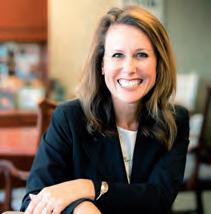

3. Do most hospice patients have cancer? Hospice is not just for cancer patients. Though many associate it with cancer, hospice can be used for any terminal diagnosis. These included Alzheimer’s, other forms of dementia, heart disease, lung disease, liver disease, and many other diagnoses. The doctor certifies that a patient meets the criteria for hospice care, and then care can begin.
4. Does hospice stop all of my medications once I sign up for hospice care? No, hospice works with your doctor and the hospice doctor to establish a plan of care to meet the goals of the patient and family. Also, hospice care is about more than medical needs. Hospice aims to treat the whole person by providing emotional, social, and spiritual support.
5. What about personal needs for those who cannot care for themselves with activities of daily living? Hospice support includes a home health aide who can assist in personal care such as bathing, dressing and light meal preparation. They are part of the interdisciplinary team, along with volunteers. Hospice organizations have many trained volunteers who visit patients, provide respite for caregivers, help with errands, and offer companionship.
~Olivia
Focuses on quality of life for the patient and family at a time when comfort, compassion and clinical expertise matter most.
To schedule your free in-home informational visit please call (214) 689-0000 or email gethelp@vnatexas.org For volunteer opportunities please call (214) 689-2271 or email volunteer@vnatexas.org

It is with great pleasure that we announce the formation of Utter, Pike & Dobbs Private Wealth Management Group of Wells Fargo Advisors. Our newly merged group is comprised of caring individuals committed to providing you with the enhanced customer care and the extraordinary service you have come to expect. We are confident that you will benefit from our combined years of investment experience, strategic collaboration and multi-generational approach.
Thank you for the opportunity to support our community, as well as our clients. We’re here for you. As always.
E. Taylor Street, Ste. 1000 (903) 893-6227 or (903) 893-6682 (800) 876-8221 www.utterpikedobbsprivatewealth.com

SHARON STONE’S QUEST FOR AUTHENTICITY, WELLNESS, AND CONTENTMENT.
BY SONDRA BARR
I
I LOST ALL MY MONEY. I LOST CUSTODY OF MY CHILD. I LOST MY CAREER. I LOST ALL THOSE THINGS THAT YOU FEEL ARE YOUR REAL IDENTITY AND YOUR LIFE.
In the chaotic world of Hollywood, where stars often fliker and fade, Sharon Stone, 65, exemplifiesan unusual durability, showcasing a narrative that triumphs over adversities. Beneath the deceptive allure of fame, she’s emerged not as a victim but as a symbol of perseverance.
At the peak of her career, prior to a cascade of devastating health issues, Stone enraptured global audiences with her sensual and commanding performance in “Basic Instinct,” and later garnered critical acclaim for her role in “Casino.” Her trajectory was steeped in a kind of success story that many only dreamed of—she was an undisputed movie star, embodying both charisma and mystique, offering the world a seductive yet empowered picture of femininity.
Yet, beneath this glamorous exterior, a storm was brewing. In 2001, a ruptured vertebral artery bled into her brain for days, leaving her with a 1% chance of survival, throwing her life into disarray. It wasn’t mere chance that allowed Stone to identify the onslaught of her stroke; it was a piercing headache and numbness in her leg, which became an omen of the cerebral hemorrhage that could have ended her life. Stone’s awareness of her own physicality in that dire moment paved the way for the medical intervention that ultimately saved her.
“The pain was still so wildly intense that I was put on a 24/7 drip of Dilaudid, which is a kind of synthetic heroin. I was in and out of consciousness,” she writes in her memoir. “… We were now on day five of my brain bleed and I had been coming and going. I had been ‘sleeping’ more than waking. I had not eaten since the initial incident…After a couple more days, I was unable to get up, stand up, or think clearly and function. I had lost 18 percent of my body mass…The general consensus was that I should go on home and stop faking it.”
Sharon Stone further shared with The New Yorker: “I didn’t know until I got home and read People magazine that I had to wait 30 days to see if I was even going to live. Nobody was communicating with me. Even 20 years ago, women’s rights were so much less than they are now, and nobody was listening to me, which is why I still scream to be heard. I still fiht with doctors because I panic when people don’t listen to me.”
The cataclysmic ripple effect of the event reverberated far beyond the physical realm for Stone, laying waste to not just her health, but dismantling her once-sturdy life in shattering ways. Prior to the debilitating event, Stone was basking in both professional and personal luminescence. An Oscar nod for Casino had already etched her name into the annals of Hollywood’s recognized talents, and on the home front, she and then-husband, newspaper editor Phil Bronstein, had recently welcomed their adopted son Roan into their lives.
However, the stroke heralded a cruel and unforgiving storm that leftno aspect of her life untouched—career, fiances, and even motherhood were unceremoniously wrested from her. Her marriage crumbled in its wake, ending in divorce from Bronstein in 2004, and the once-buzzing phone, linking her to Hollywood’s bustling opportunities, fell eerily silent.
“I lost everything,” she openly confidd to journalist Nigel Smith, her words bearing the weight of every stripped-away piece of her past self. “I lost all my money. I lost custody of my child. I lost my career. I lost all those things that you feel are your real identity and your life.” Stone’s narrative unearths more than mere personal pain and loss; it stands as a haunting epitaph to the often underestimated fragility of what we perceive to be steadfast and enduring in our lives.

The pain WAS STILL SO WILDLY INTENSE THAT I WAS PUT ON A 24/7 DRIP OF DILAUDID, WHICH IS A KIND OF SYNTHETIC HEROIN. I WAS IN AND OUT OF CONSCIOUSNESS. “
When Stone speaks about the demise of her once-thriving career in Hollywood, the lost custody of her child, and her fiancial ruin, there is an evident tranquility in her acceptance of that period as a mere chapter, not the entire narrative of her life. Sharon’s unapologetic embrace of her life’s calamities and her aptitude to turn them into opportunities for transformation makes her more relatable, and in many ways, inspirational.
Stone’s journey through trauma, recovery, and self-discovery took a turn when she chose to no longer be governed by fear, fihting for over a decade for custody of her son Roan.
“I fought for my son, put him ahead of getting anything at all back in my life. I did that for 13 years; I played a very long, very difficult game of custody chess in an effort to get him everything I could for his health and well-being,” she pens in her memoir. Her endeavors demonstrate not just a commitment to family above all, but an unwavering dedication to the well-being and future of her children.
Subsequently, Stone expanded her family, adopting biological brothers Laird and Quinn.
It was her 2021 memoir, “The Beauty of Living Twice,” that delved into Stone’s deeply human and relatable story. In it, she addresses her Hollywood career’s collapse, lost custody, and fiancial ruin with a tranquil acceptance, viewing it as a chapter, not the entirety, of her life. Her unreserved acceptance of life’s adversities and her ability to convert them into transformative opportunities lend relatability and inspiration.
Stone’s wisdom extends to wellness and contentment, both physically and mentally. Post-turmoil, she found peace in the arts, painting, and pickleball, not merely as hobbies but as mediums of recovery and expressions of joy.
In April 2023, Stone unveiled her fist-ever art exhibit, Shedding, an intimate exploration of her multifaceted self through abstract and landscape paintings. Art, it seems, has been an ever-present force in Stone’s life. She studied in the discipline at Edinboro University of Pennsylvania before her studies were cut short by the advent of her modeling and acting careers. “All of those paintings I sold to other students to eat and live,” Stone recalls in a chat with Maxim. “And then, you know, this acting thing—that took up quite a bit of my time, and I didn’t paint anymore.”
The return to painting occurred when the world locked down, a friend’s giftof a paint by numbers kit reigniting a subdued flame. Stone, thereafter, invested in brushes, paint, canvases, and boards, progressively crafting over a dozen paintings before allowing herself the luxury of prepared canvases.
Giving back through her work with the Barrow Neurological Foundation and ensuring others battling neurological conditions have a fihting chance is also important to Stone. Her lived experiences, once shrouded in layers of Hollywood glamor and superficality, now serve as the foundation of her advocacy, focusing on education and research to light the path for others navigating similar dark tunnels.
In a universe that often reduces individuals to their pain, Stone redefies what it means to be a survivor, to reclaim, rediscover, and revel in one’s identity beyond trauma. Stone encapsulates a wellness that is not solely built upon the absence of disease but the continuous and intentional act of crafting one’s wellness every day. Today, Stone is not just a movie star – she is a beacon of relentless authenticity, a testament to harnessing one’s past to forge a future with unwavering determination, a journey where living well means valuing oneself.

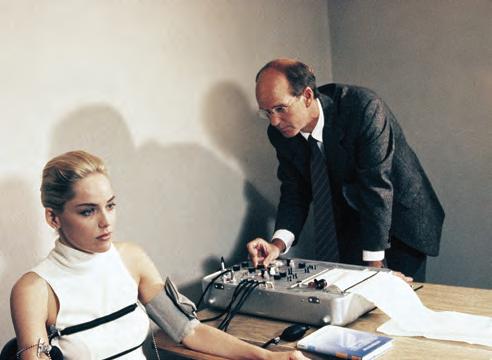





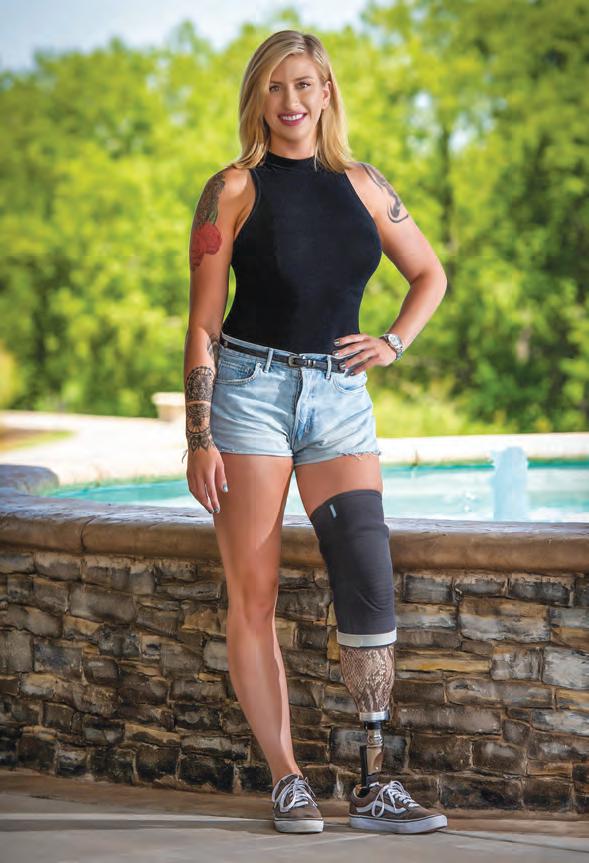
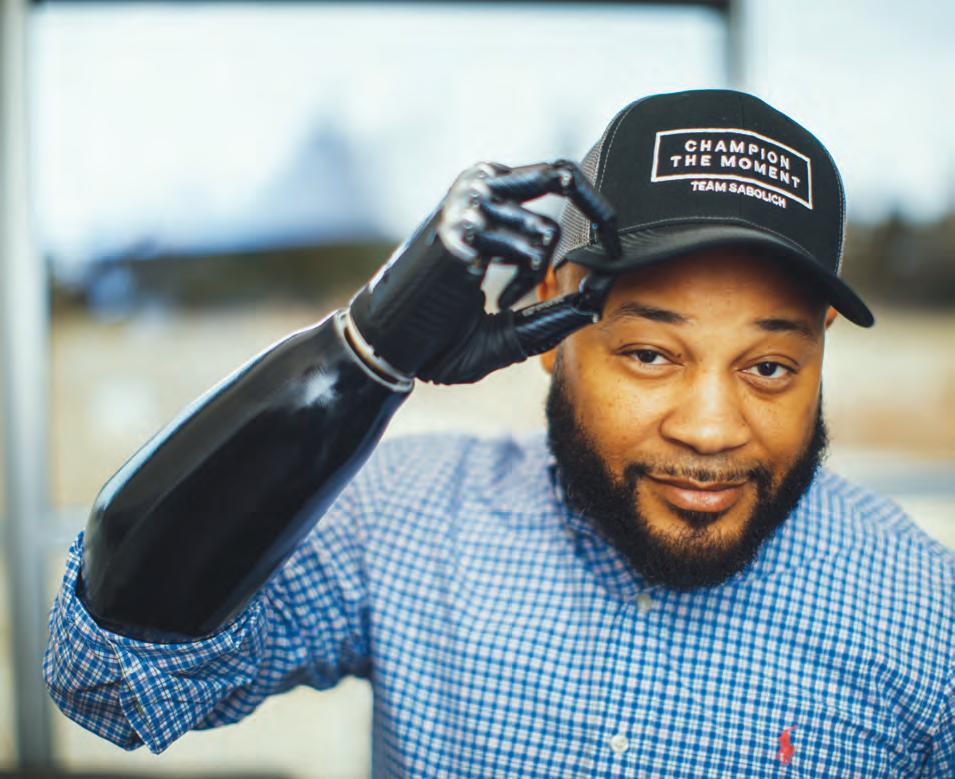


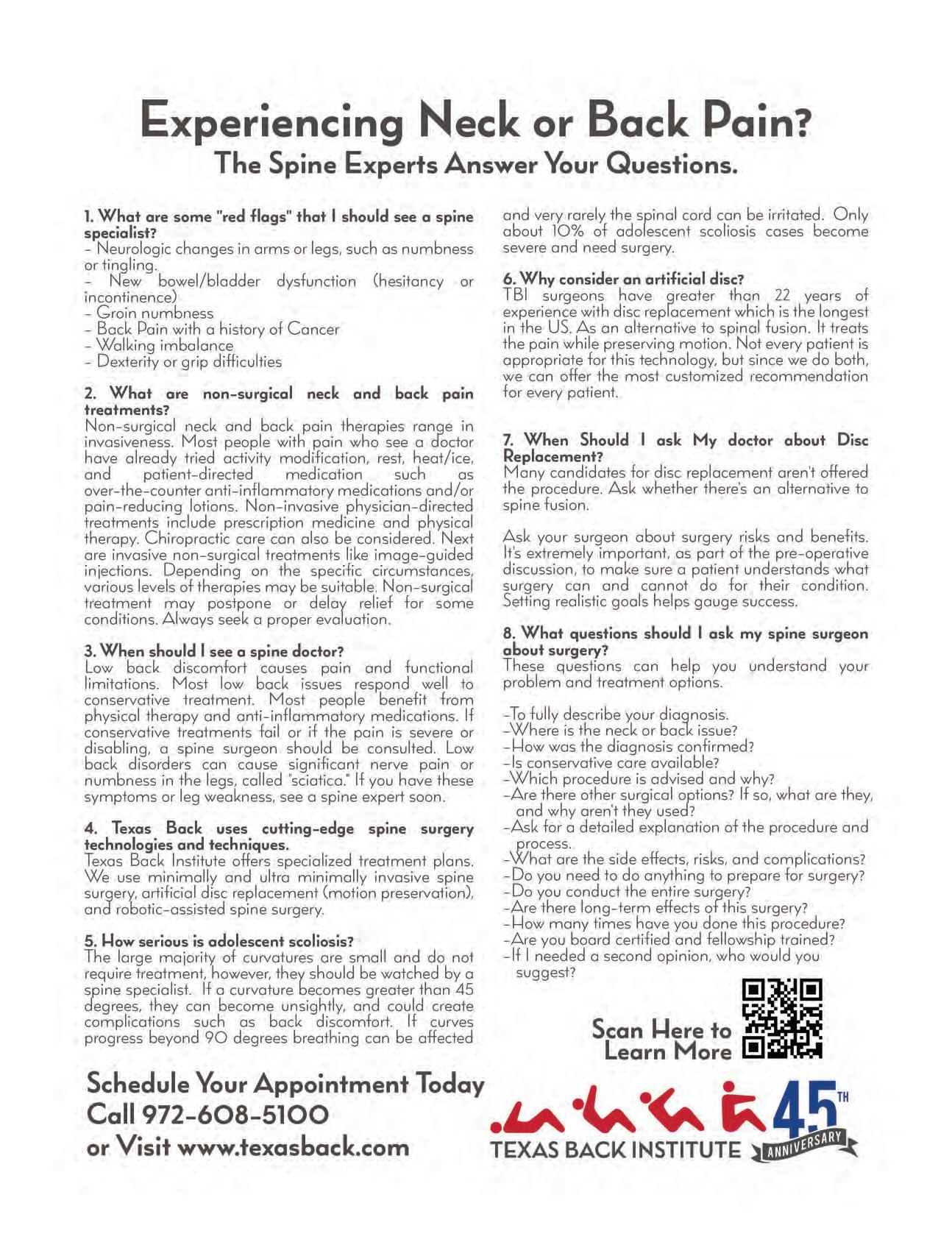

» Staffed by 2 Licensed, Doctors of Audiology
» Hearing Aid Fittings, Maintenance and Repairs
» Invisible Fittings/Open Fittings
» Evaluation Period On All Hearing Aids
» Hearing Evaluations For All Ages
» Wireless/Connectivity Hearing Solutions
» Battery Purchase Programs
» Custom Ear Protection
» Assistive Devices

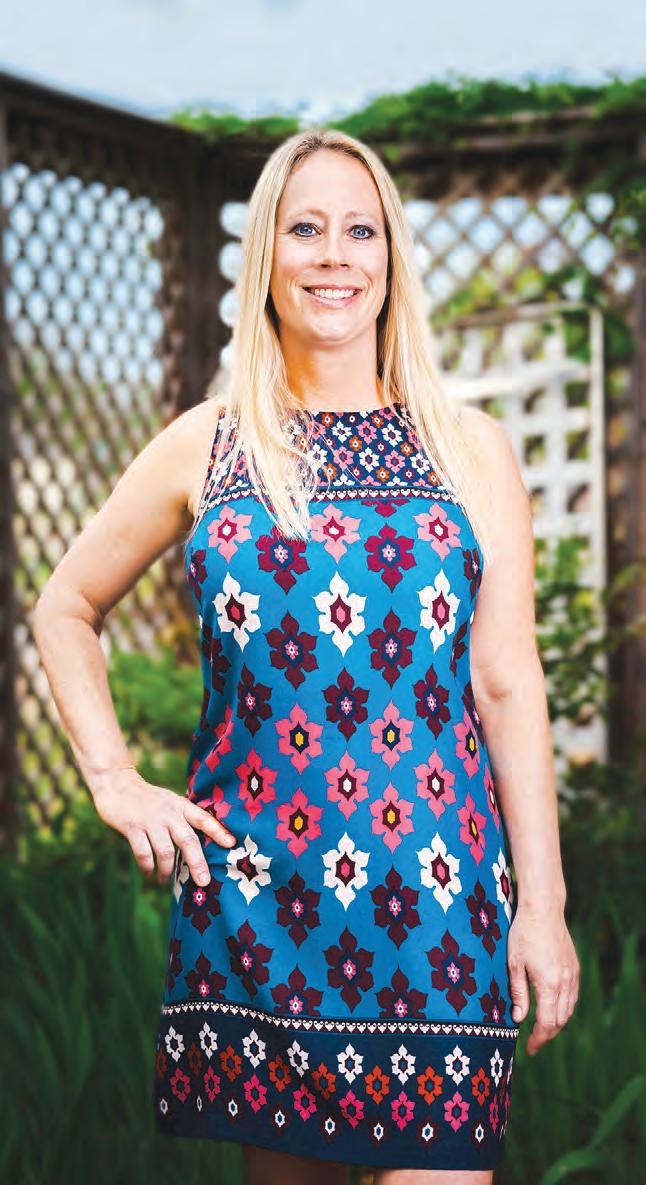

Hearing loss is a pervasive, often underestimated health issue in the United States, affecting millions across all age demographics. Despite its prevalence, hearing loss frequently goes unnoticed, resulting in a signifiant lack of awareness and understanding of its impact on individuals and society.
Hearing loss is more common than most people realize. According to the National Institute on Deafness and Other Communication Disorders (NIDCD), approximately 15% of American adults—37.5 million people aged 18 and over—report experiencing trouble with hearing.
Hearing loss can result from various factors, both genetic and environmental. Here are some primary causes:
• Aging: Presbycusis, or age-related hearing loss, is the most common form. It occurs gradually as individuals age and often reduces the ability to hear high-pitched sounds.
• Noise Exposure: Prolonged exposure to loud noises—from music, machinery, fiearms, or everyday city noise—can permanently damage the delicate hair cells in the inner ear, resulting in noise-induced hearing loss.
• Genetics: Some forms of hearing loss are hereditary and can be passed down through families, with genetic factors signifiantly influencing susceptibility.
• Medical Conditions: Certain conditions, such as diabetes, cardiovascular disease, and infections like meningitis, can also contribute to hearing loss.
• Medications: Ototoxic drugs can harm the auditory system, potentially causing hearing loss or tinnitus (ringing in the ears).
Difficulty understanding speech in noisy environments is the most commonly reported problem among individuals with hearing impairment. Clinical studies show that even mild hearing loss can hinder one’s ability to communicate against background noise.
In simple terms, noise is any unwanted signal that interferes with what the hearing instrument user wants to hear at a given moment. Ths concept is known as the Signal-to-Noise Ratio (SNR). When background noise is present, the speech signal (what we want to hear) is relatively low compared to the noise level. People with hearing loss require a more favorable SNR (louder speech than noise) to comprehend speech compared to those with normal hearing.
How do hearing instruments improve the SNR? The optimal way to minimize background noise is to prevent it from entering the hearing system. Ths can be achieved with advanced directional microphone technology, which assumes that the primary signal for the listener is speech, positioning the desired signal at the forefront. To enhance the SNR, the signals from the front (speech) are amplifid, while signals from other directions (background noise) are suppressed. Ths approach facilitates better speech understanding with reduced background noise interference.
Can everyone benefit from directional microphone technology in hearing instruments? Yes, but the question remains: which technology is most appropriate? The answer largely depends on lifestyle. The more active a person is, and the more diverse their listening environments, the harder the hearing instrument must work for them, thereby necessitating more advanced directional technology. Your audiologist can help you make an informed decision about the technology based on your hearing loss and lifestyle requirements.
Dowager’s hump, neck hump, text hump, hunchback, or round back area all names for the same condition. There are a few different labels for the excessive bend in your spine. There are a number of difference causes of dowager’s humps, the most prevalent of which are postural, congenital, and Scheuermann’s.
The term “dowager’s hump” refers to the slightly rounded hump that can sometimes be seen at the base of an elderly woman’s neck, however the condition can occur in people of either sex.
Considered a spinal condition, the chronic forward-leaning posture that is all too frequent in our world of computer screens and other devices is the cause of this ailment, is named “kyphosis” in the medical community. If you have a propensity of slouching all the time, it’s possible that your top vertebrae will develop an unnatural bend over time. Your spine has natural curves to it, which helps you stand straight and supports your posture, but kyphosis can affect your posture and make standing a challenge.
In addition to having a hump in your upper back, you may also experience:
• Rounded shoulders.
• Tight hamstrings.
• Pain or stiffness in your back and shoulder blades.
• Extreme fatigue.
• Headaches or migraines
Oftentimes, a dowager’s hump is frequently confused with the condition known as a bufflo hump, which has a similar look. The development of a bufflo hump is frequently seen in patients who suffer from Cushing’s disease where an excessive amount of cortisol is produced, resulting in an increase in the formation of fat. Ths excess fat often deposits behind the neck forming what is often referred to as the bufflo hump. Both conditions can occur together or independently.
Poor posture is the leading contributor to the development of a dowager’s hump. Because of this, a dowager’s hump most commonly appears between the ages of 40 and 60. Ths forward-leaning and humped posture is frequently the result of tight muscles in the chest and neck, as well as weak muscles in the upper back and neck. Other possible causes include:
• Osteoporosis. A compression fracture causes an increased forward curve. Ths causes your upper back to curve more, which forces you to lift our neck into more extension to be able to see forward. It’s those two factors that cause the bump in the upper back. Women are more likely to develop a Dowager’s hump, as hormone changes during menopause can increase their risk of osteoporosis.Degenerative changes in your spine. Ths is a slow, progressive loss of the normal structure and function of your spine. Degenerative changes range from mild to severe and most often occur as a result of the normal aging process. Arthritis, tumors and infections can also cause these changes.

The hump at the base of your neck may be caused by osteoporosis or poor posture.
• Underlying bony or ligamentous pathologies. Spinal infections, fractures, tumors, calcifiations of spinal ligaments and other bony or ligamentous pathologies can also change the shape of your spine.
• Excess weight. It’s not the fat that is choosing to go to the back of your neck, but as you put on weight on your body, it can also get worse in this area.
• Congenital problem. Less frequently, the spine doesn’t form properly before birth.
• Scheuermann’s kyphosis. Ths shows up in teenagers, when their spine develops into a wedge shape instead of a rectangle.
How do I get rid of a dowager’s hump?
You may often improve or reverse a dowager’s hump by manipulating it with exercises that strengthen the muscles in your upper back and neck. Your age and the severity of the condition will determine whether or not this is possible. Building up the strength in these muscles can assist you in pulling your shoulders and head up.
Try doing the following exercises:
• Chin tucks. To do a chin tuck, pull your chin straight back. Ths is good for the disks in your neck and strengthens your neck muscles. Do three sets of 10 daily.
• Scapular squeezes. For these, squeeze your shoulder blades together, which helps improve your upper back muscles. Do three sets of 10 daily.
• Release your suboccipital muscles, the muscles located at the base of your neck which are responsible for pulling your head into an incorrect forward posture. Lay on our back and place a tennis ball to where it’s pressing on this area. Gently rock your head from side-to-side in order to feel a release in the muscles. Do this a couple of minutes each day.
• Doorway pectoral stretches. Stand in an open doorway, raising your arms like a goalpost with your palms forward. Place your palms on the door frame and step forward with one foot to feel the stretch across your chest. Hold for 20 to 30 seconds. Do two to three times daily.
Your primary care physician may recommend physical therapy, which can teach you how to perform these exercises in the correct manner. You won’t have to spend a lot of time performing these exercises,
but if you do them frequently, you’ll notice a reduction in discomfort, an increase in energy, and an overall improvement in your quality of life. The most signifiant advantage, though, is that it encourages a more upright posture, which in turn helps lessen or eliminate the appearance of the hump. However, a dowager’s hump is not something that can be eliminated quickly. It can even take a few months for everything to get back to normal after such a long period of time.
How do I prevent a dowager’s hump?
The most effective method for avoiding the problem is to keep up a healthy posture. How is your posture while reading this article? It is recommended that you hold your cell phone at eye level so that you do not have to crane your neck in order to see the display. Repeat the process when at your computer in the same way. If you have a habit of constantly bending forward, you are putting unnecessary strain on your back and neck, which can lead to pain. Because of the increased strain placed on the muscles and the increased pressure placed on the discs, this forward curve raises the likelihood of experiencing disk problems as well as neck tiredness. Ths occurs as a result of the fact that the neck, rather of balancing with gravity, needs to fiht against it in order to support the weight of the head. Our bodies aren’t made for that kind of curve. It can cause neck, upper back and lower back pain and even reduced lung capacity.
Hyperkyphosis is when the curve of your spine is extreme, is associated with impaired lung function, reduced functional capacity and increased higher risk for death.
You should also make an effort to stop the progression of osteoporosis in order to reduce the risk of your spine having compression fractures. These fractures can cause the upper back to arch forward more dramatically.
Symptoms of dowager’s hump might vary from person to person, but depending on the degree to which nerves are involved, radicular pain, tingling, and/or numbness that can be felt throughout the body. The severity of symptoms, such as troubles with the bowel or bladder, problems with balance and coordination, and impaired lung function, can increase if the condition is either allowed to go untreated or is not addressed aggressively.
If you suspect you may have a dowager’s hump, the fist step of treating a neck hump is to determine the cause. Talk to your primary care physician to rule out any underlying issues.


Attorney Deandra M. Grant leads Hamilton Grant’s North, East and Central Texas offices. She is an international speaker on DWI law, science and trial skills. As the author of the annually updated Texas DWI Manual, she is viewed by her peers as being a leader in her field. Deandra understands the science behind alcohol absorption and elimination rates and can use this knowledge to competently defend you.
Deandra formerly was an assistant district attorney. Her tenure as a prosecutor focused on DWI prosecutions which has given her firsthand knowledge on how to counter the prosecutor’s evidence and strategy. Deandra has spent hundreds of hours in training courses and programs related to DWI defense and has completed the certification course to administer standard field sobriety testing (SFST), the same training course taught to police officers nationwide on how to identify drunk drivers during traffic stops. As a certified SFST Instructor, Deandra has taught the course to other attorneys. She’s also completed the coursework on DWI forensic blood and urine testing.

“I have a masters degree in pharmaceutical science and a graduate certificate in forensic toxicology. I am able to take apart evidence in ways a lot of other attorneys are not able to do. The most important part of my job is being the barrier between the government and my client. Standing between them. Making sure their rights are protected.”
–DEANDRA GRANT
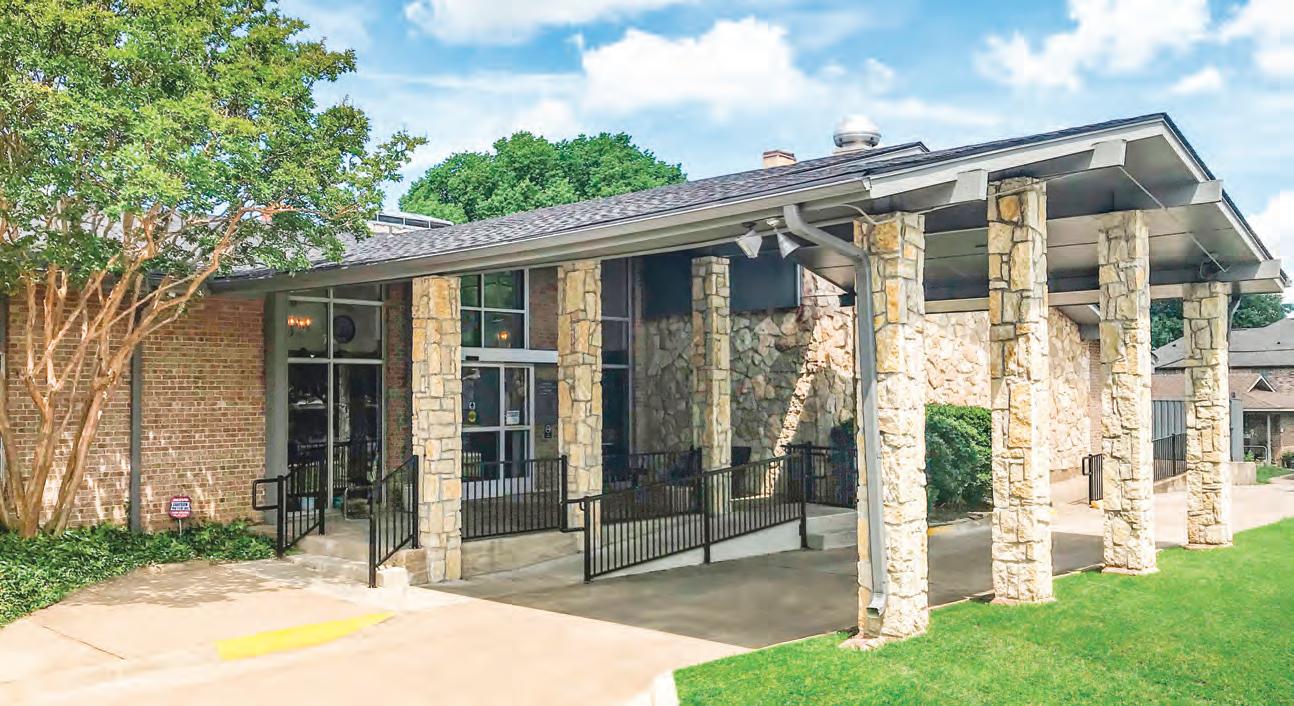
CENTER FEATURES:
• Chair Yoga
• Adaptive Yoga
• Chair Volleyball
• Treadmills
• Stationary Bikes
• Fitness Classes
• Book Club
• Movie Matinee
• Pool Tournaments
• Art Classes
• ZUMBA (Coming Soon)
And so much more!
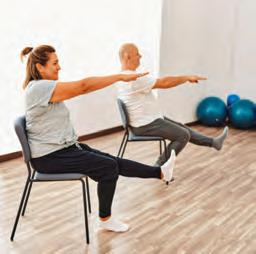

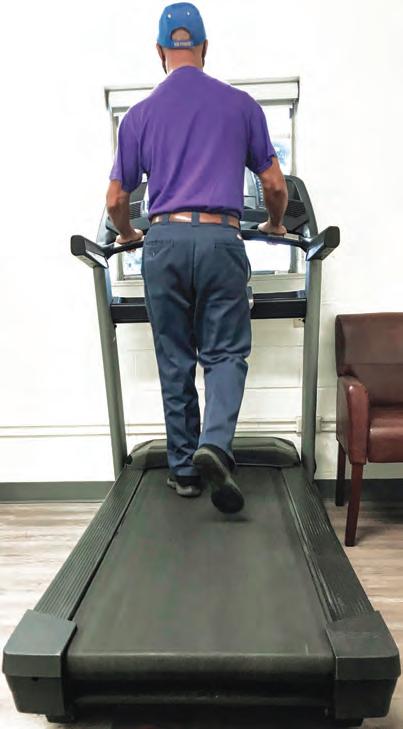
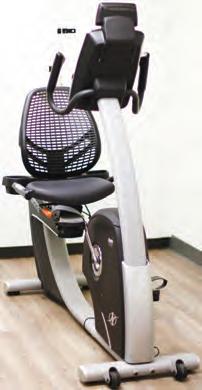
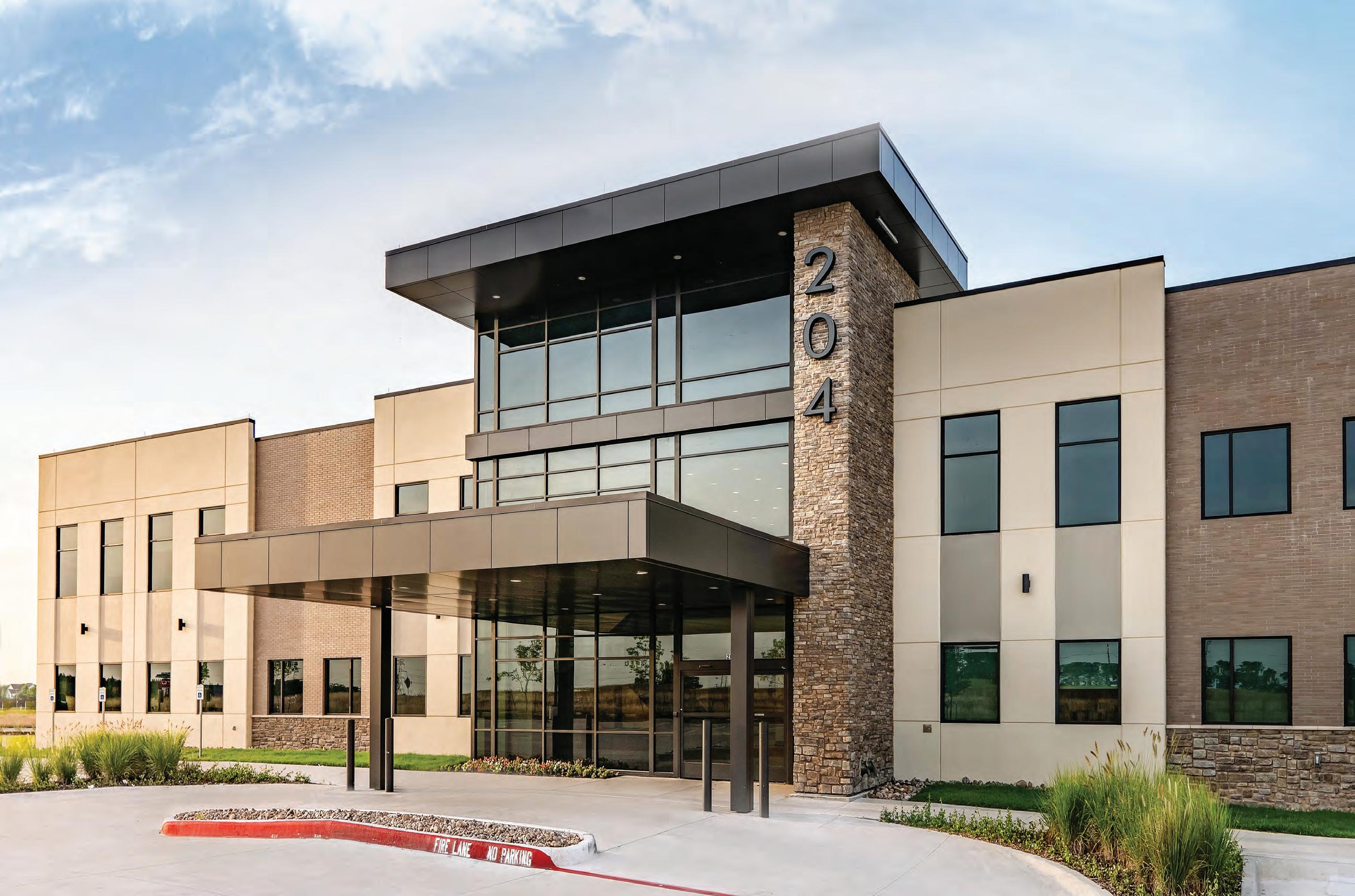
Jelsma Orthopedics & Sports
Richard D. Jelsma, MD
Texas Joint Institute.............................................Suite
➠ Duncan L. McKellar, Jr., MD
➠ Charles E. Toulson, MD, MBA
Helix
➠ Jon Poe, PT, LAT ENT
➠ Hunter Richmond, MD
➠ Peter Selz, MD
➠ McDonald Arnot, DO
➠ Benarji Tegala, MD
➠ Jeremy Urbanczyk, DO
➠ Jermaine G. Clarke, DO, MBA
➠ Joseph Kim, MD Texoma
➠ Ikram Kureshi, MD


Baby boomers are the fist generation to make a concerted effort to keep healthy and to stay active as their body ages. They have made it a point to redefie aging. There were of course exceptions in previous generations who kept active; however, prior generations were more likely to take up gardening or lawn bowls. My parents and their friends rarely, if ever, did planned exercise as we know it today, and their parents even less so.
The term boomeritis was coined by an orthopaedic surgeon at the Hospital of the University of Pennsylvania. He noted that while these fitness intentions were admirable, they led to a signifiant increase in the number of overuse injuries in the baby boomer generation. He thus used the term boomeritis to describe the growing number of sports injuries in this demographic. These injuries range from tendonitis to bursitis and arthritis. The suffix “tis” refers to inflammation.
Most injuries are related to overuse. Listen to your body and learn ways to prevent injuries. Several factors contribute to the rise of Boomeritis:

» OVERZEALOUS TRAINING: Many older adults may try to perform exercises or activities at the same intensity as when they were younger, pushing their bodies beyond their current capabilities.
» LACK OF PROPER WARM-UP AND COOL-DOWN: Neglecting warm-up and cool-down routines can significantly increase the risk of injury.
» POOR TECHNIQUE: Incorrect form and technique during exercise or sports can lead to muscle and joint strain.
» INADEQUATE RECOVERY: Older bodies require more time to recover. Pushing too hard without allowing for sufficient recovery can result in injuries.
» NEGLECT OF NUTRITION AND HYDRATION: Proper nutrition and hydration are crucial for maintaining muscle and bone health. Neglecting these aspects can increase the risk of injury.
It’s never too late to start an exercise program that can help you age in a more healthy manner but take preventative steps to prevent boomeritis.
» CONSULT A HEALTHCARE PROFESSIONAL: Before starting any exercise regimen, consult with a healthcare provider or a sports medicine specialist. They can assess your overall health and provide guidance on what types and intensities of physical activity are suitable for you.
» TAILOR YOUR ROUTINE: Customize your exercise routine to your current fitness level. Gradually increase the intensity over time, focusing on steady progress rather than immediate results.
» PROPER WARM-UP AND COOL-DOWN: Always begin and end your exercise sessions with a proper warm-up and cool-down. This will help prepare your muscles and joints for activity and prevent sudden stress.
» STRENGTH TRAINING: Include strength training in your routine to build muscle mass and maintain bone density. This can help protect against fractures and joint issues. Seek the help of a personal trainer who can design you a program.
» FLEXIBILITY EXERCISES: Regular stretching and flexibility exercises can improve joint mobility and reduce the risk of muscle and joint strains.
» BALANCE AND CORE TRAINING: Improving balance and core strength can help prevent falls and associated injuries.
» STAY HYDRATED AND EAT WELL: Proper nutrition and hydration are vital for muscle and bone health. Ensure you maintain a well-balanced diet and drink enough water.
» LISTEN TO YOUR BODY: Pay attention to your body’s signals. If you experience pain, discomfort, or fatigue, give yourself adequate time to rest and recover.
» USE PROPER EQUIPMENT: Make sure you have the right gear and equipment for your chosen activity. Ill-fitting shoes or sports equipment can contribute to injuries.
» REGULAR CHECK-UPS: Schedule regular check-ups with your healthcare provider to monitor your overall health and address any potential issues before they become serious.
» CROSS-TRAIN: Avoid repetitive movements by incorporating a variety of exercises into your routine. Cross-training can reduce the risk of overuse injuries.
» INCORPORATE LOW-IMPACT ACTIVITIES: Consider low-impact activities like swimming, cycling, or yoga, which can be easier on your joints while providing valuable health benefits.
With the right precautions, a well-designed fitness routine, and a focus on overall health, you can signifiantly reduce the risk of injuries as you age. Successful aging lies in the balance between physical activity and self-care.
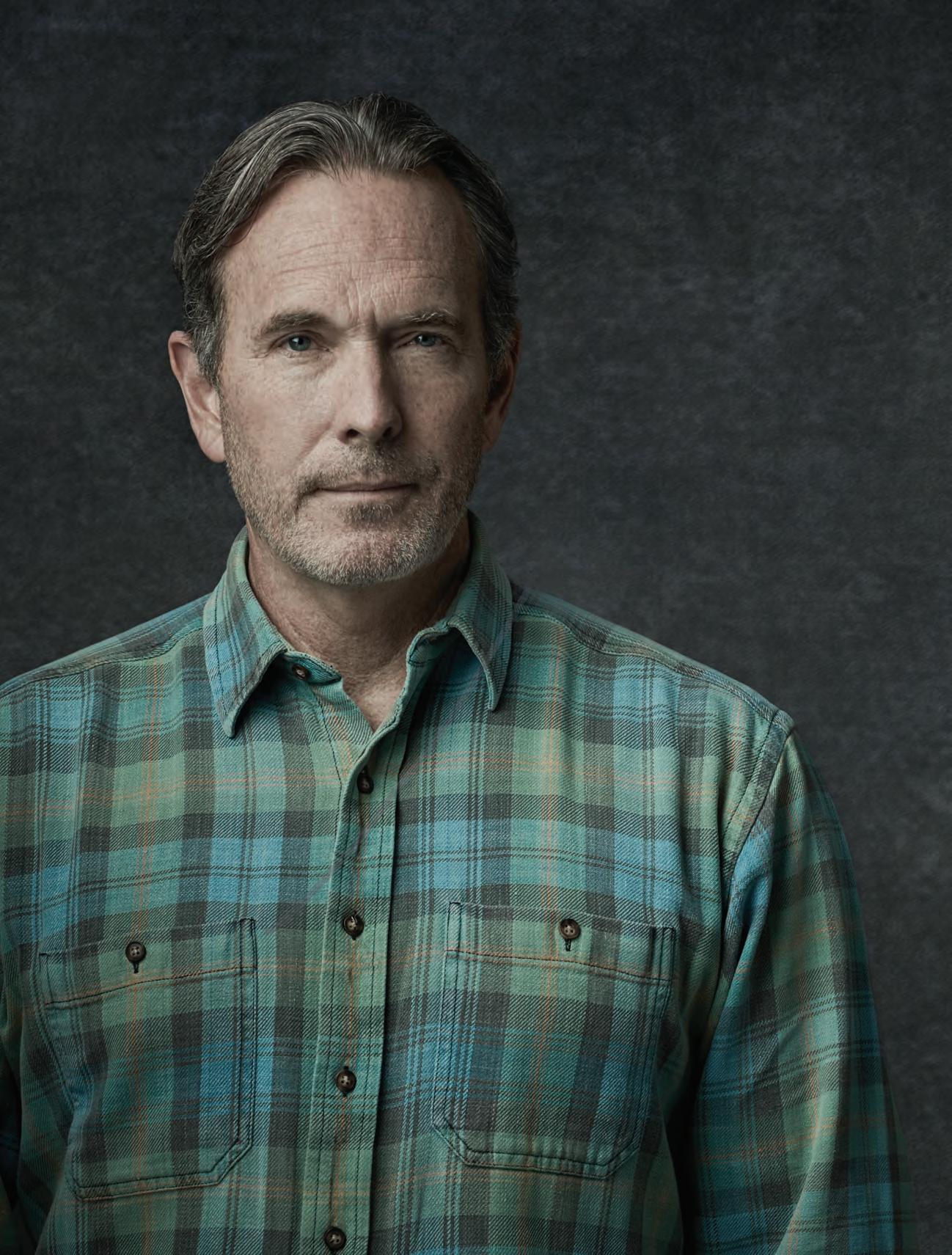

Although lung cancer is often preventable, this cancer type has the highest rate of cancer-related deaths nationwide. In fact, it claims almost as many lives annually as colon, breast, and prostate cancers combined. In 2023, an estimated 14,510 Texans are expected to be diagnosed with lung cancer, with 80 to 90% of all lung cancer deaths attributed to smoking.
Like with all cancer types, knowing your risk of developing lung cancer is crucial in early detection. Understanding what preventable measures you should take, such as lung cancer screenings, can reduce your risk and protect your body against lung cancer.
Men and women who smoke are approximately 25 times more likely to develop lung cancer. Lung cancer screenings (LCS) are key for early detection and lowering the risk of mortality, especially in those who smoke. People ages 50 to 80 who have smoked, on average, one pack of cigarettes daily for 20 or more years and who currently smoke or have quit within the past 15 years are at a higher risk of lung cancer and qualify for screening with annual low-dose non-contrast computed tomography (CT) of the chest.
A recent study found despite 70% of at-risk women being diligent in getting their annual mammogram, the screening rate for lung cancer among eligible women was low by comparison. Researchers discovered a 20% reduction in lung cancer deaths among at-risk women who received a low-dose screening CT of the chest.
By encouraging women to become educated on their risk factors, as well as consider getting an annual LCS in addition to their mammogram, the hope is to reduce deaths from both common types of cancer.

If you are a non-smoker, there are still other genetic and environmental factors that may play a role in your risk of lung cancer.
• Age: Most people diagnosed with lung cancer are 65 or older.
• Family and/or Personal History: People with a parent or sibling who had lung cancer may have a higherthan-average risk, even if they do not smoke. People who have already had one episode of lung cancer are at an increased risk of developing a second lung cancer.
• Carcinogen Exposure: People who live or work in certain conditions with exposure to radioactive gas, asbestos, arsenic, radon, diesel exhaust, air pollution, and other substances have an increased risk of developing lung cancer.
Do not smoke or quit as soon as possible. Smoking is the number one risk factor for lung cancer. Other steps you can take to lower your risk of lung cancer include:
• Take precautions at work: Exposure to certain types of fumes, dust, and chemicals can cause lung cancer. Make sure to wear appropriate safety gear.
• Test your home for radon: Radon, a radioactive gas, can increase your risk of lung cancer with long-term exposure. Most of Texas has low levels; however, some homes that are built on soil with natural occurring deposits like uranium can have high levels of radon that may seep into the home. To test your home, you can buy a radon detection kit or seek an EPA-suggested professional.
• Avoid secondhand smoke: More than 7,300 people in the U.S. die annually from lung cancer as a result of exposure to secondhand smoke.
Men and women are encouraged to consult with their physician to learn about the impact of lung cancer, including what they can do to lower their risk and protect their body, as well as consider getting screened.

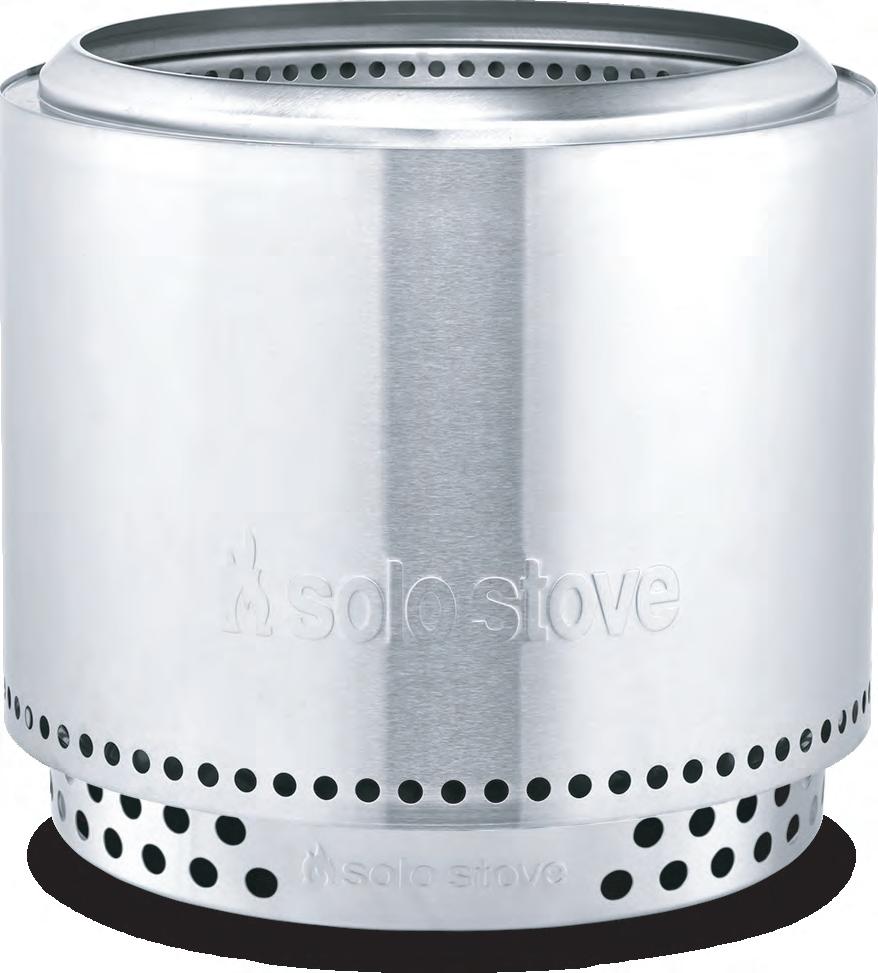

Southwest Foot & Ankle Center is a respected group of board certified foot and ankle surgeons. They are fellow trained surgeons, and board certified in wound care and reconstructive surgery. All physicians have also completed an intense residency and fellowship in the area of limb salvage, and foot and ankle surgery. The team at Southwest Foot & Ankle Center strive to make each patient’s experience personable. Our outcomes are of perfection and meticulous in surgery. As a result, patients from all over the country seek to be treated by DFW Wound Care Center.
Foot and Ankle Surgery
Bunion and Hammer Toe Correction
MIS—Minimally Invasive Surgery
Heel Pain (Plantar Fasciitis) Stem Cell Therapy
Neuropathy
Ingrown Toenails
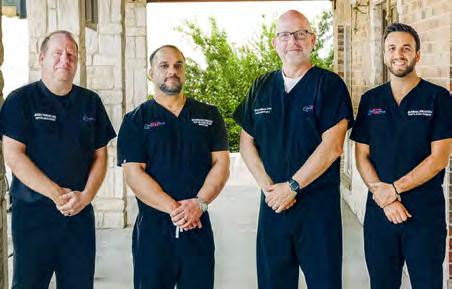
PLANO CLINIC 5804 Coit Rd., Ste. 100 Plano, TX 75023
Tarsal Tunnel Syndrome Diabetic Foot Care
Flat Feet
Trauma Wound Care
Custom Orthotics & Braces
Laser Therapy for Pain, Swelling, Arthritis, and Wounds
LEWISVILLE CLINIC 502 N. Valley Pkwy., #2 Lewisville, TX 750067 IRVING CLINIC 6161 N. State Hwy. 161, Ste. 320 Irving, TX 75038
DESOTO CLINIC 714 N. Hampton Rd. De Soto, TX 75115



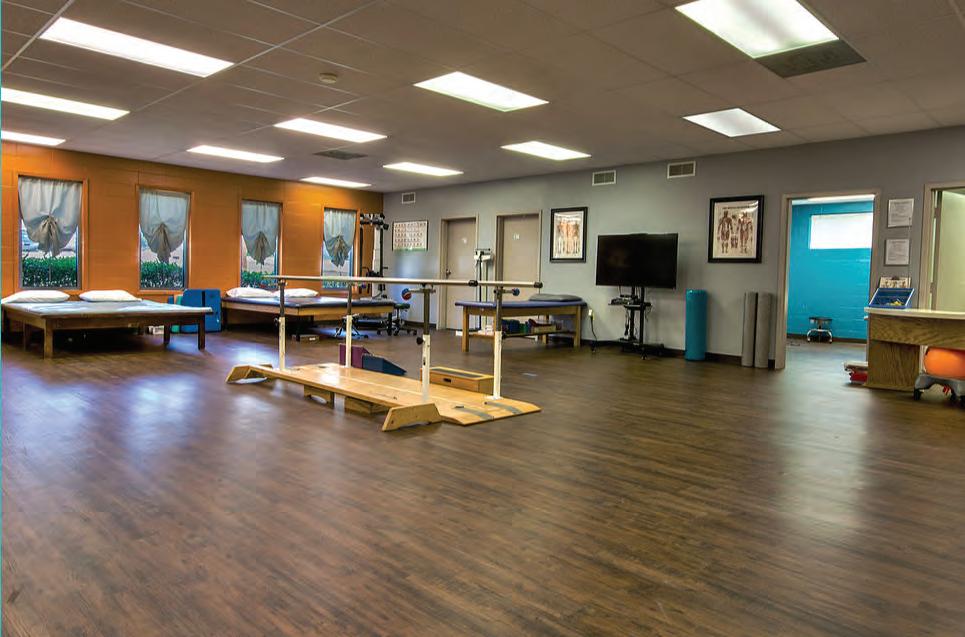
Learning to swim is often seen as a rite of passage in childhood, but what about adults who never had the opportunity or developed a fear of water? The fear of water, known as aquaphobia, can be daunting to overcome, but it’s never too late to learn.
Swimming is a life skill and for a good reason. It’s more than just splashing around. Knowing how to swim can be a matter of life or death. However, a Gallup survey published two years ago revealed that across the world, fiy percent of adults report feeling afraid in water that is over their heads, and that’s just in pools. One in three adults in the United States is terrifid of even submerging their heads in water.
American Red Cross launched a campaign to cut drowning in half in fiy cities. They released a survey that found that while 80 percent of adults claim they could swim, 44 percent of them also admit they would fail a basic test. That’s almost half the adult population!
So why is it that the vast majority of adult nonswimmers have the impression that they are the only ones? The primary reason for this is that they are largely unaware of the fact that millions of other adults are in on their “little secret.” They are certain that they will never be able to learn how to swim because of the humiliation they feel, the terrifying and/or unpleasant experiences they have had with water, and the poor training techniques they have been exposed to.
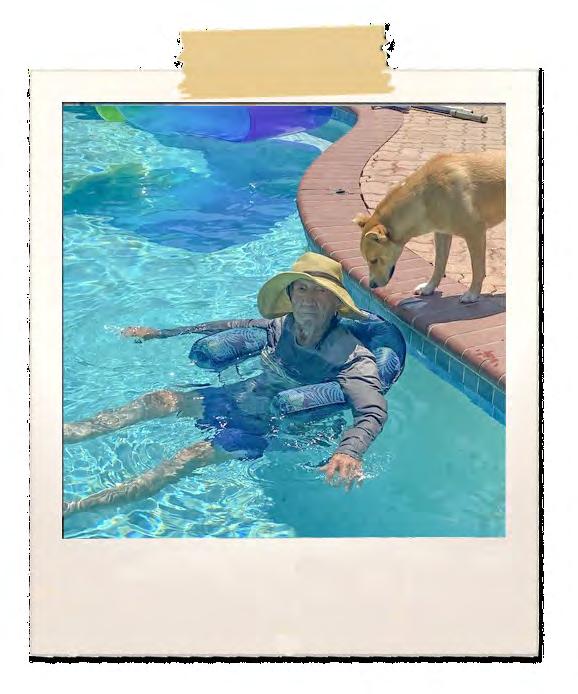
Hollis Parker, age 90, enjoying a swim at his granddaughter’s in Allen, TX.
mental and emotional obstacles that keep people from learning to swim. Many adults have given up hope of ever learning to swim after numerous failed attempts at swimming instruction. They typically do not want to try again.
Meanwhile, many of these same people are seeing their children and grandchildren learn to swim and watching them swim like fish. In the meantime, they avoid joining them, not only because they are afraid of the water itself, but also because they are afraid of being “found out” and publicly embarrassed by their lack of competence. In other words, they are embarrassed by their inability to swim. The result is that they have little choice but to observe what appears to be the rest of the world having a good time, sometimes even in the pools that they themselves own. They are missing out on the enjoyment, the companionship, and what is likely one of the very best ways to work out in the area.
When appropriate educational methods and conditions are in place, all of this is entirely unnecessary. Even though there are many wonderful swim programs available, which do teach individuals how to swim, these programs frequently lack an awareness of the challenges that adults experience that most children do not. Even while there is a lot of attention paid to the physical concerns and “learning strokes,” the actual hurdles for adults tend to be psychological barriers. These are especially the kinds of barriers that are specificto people who have had a lot of years of poor experiences with traditional swim lessons and other similar activities.
FOOLPROOF SYSTEM:
• Find a supportive environment. Call and speak to the manager of your local swim school and inquire about adult only classes with swim instructors who specialize in water-related anxieties. The instructors are trained to handle fear and can provide reassurance.
• For shy and embarrassed swimmers, sign up for an early or late evening class when the swim school isn’t as busy or take a private class by yourself. Visit the school before your class so you can get comfortable in the environment prior to getting into the pool. You can also take a trusted friend or family member along.
• Take it slow. Don’t rush the process or be hard on yourself by pushing too hard. Small steps. Get comfortable in the water fist until you become more confidet.
• Use a fltation aid such as a life jacket, pool noodle, or kickboard to provide an added sense of security while you learn to swim.
“We’re asking every family to make sure that both adults and children can swim and that parents make water safety a priority this summer,” said Connie Harvey, director Centennial Initiatives at American Red Cross. Non-swimmers of any age, fiding yourself in water over your head can be fatal. Ths is preventable.
DFW Wound Care Center is a group of wound care specialists in all of the DFW area. They are fellow trained surgeons, and board certified in wound care and reconstructive surgery. All physicians have also completed an intense residency and fellowship in the area of limb salvage, and foot and ankle surgery. When it comes to wound care and limb salvage, DFW Wound Care Center has the knowledge and experience to successfully treat your condition. As a result, patients from all over the country seek to be treated by DFW Wound Care Center.
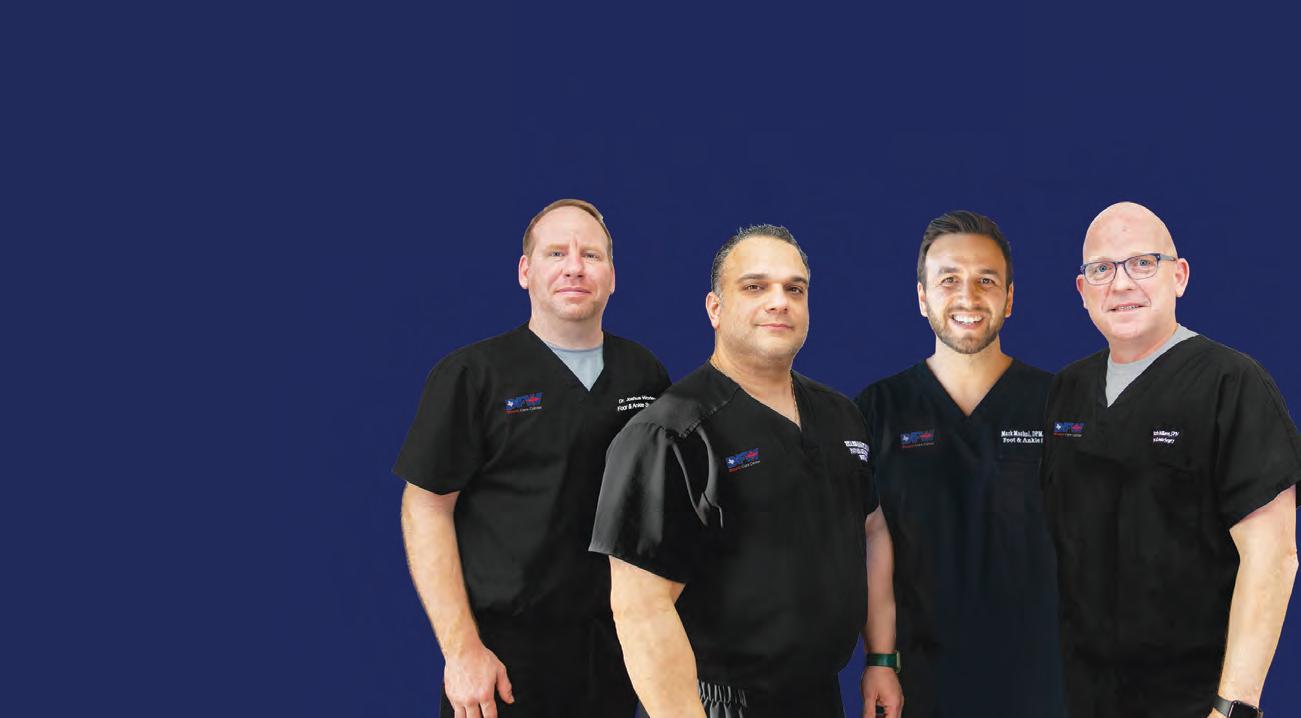
Whether caused by diabetes, infection or disease, any wound that will not heal can be very serious. If you are experiencing a wound or ulcer that will not properly heal, our wound care center can provide a range of expert treatment options best in each case. We offer non-surgical and surgical treatments for:
Diabetic Wounds & Ulcers
Arterial Ulcers
Infected Wounds
Open Wounds
Pressure Ulcers

Vascular Wounds
Acute Wounds
Non-Healing Wounds
Chronic Wounds
Surgical Wounds
Traumatic Wounds
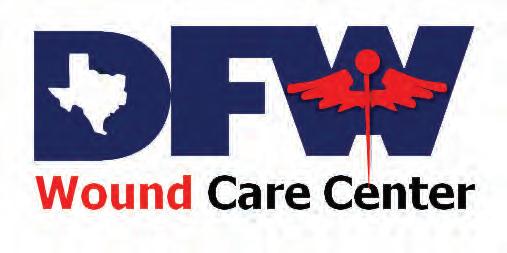
PLANO CLINIC
5804 Coit Road, Ste. 100 Plano, TX 75023
LEWISVILLE CLINIC
502 N. Valley Pkwy., #2 Lewisville, TX 75067
IRVING CLINIC
6161 N. State Hwy. 161, Ste. 320 Irving, TX 75038
DESOTO CLINIC
714 N. Hampton Rd. De Soto, TX 75115
Premier Foot & Ankle specializes in the treatment of all foot and ankle issues patients of all ages may experience. Our dedicated providers are committed to providing patients with quality care and pain relief using cuttingedge technology such as Pulse Activation Treatment to cure heel pain/plantar fasciitis as well as Padnet vascular and Smart Scan nerve testing for diabetics. By for the entire family, we at Premier Foot & Ankle focus on treating both the injured athlete and anyone with foot or ankle injuries.
Premier Foot & Ankle is the leading practice of foot and ankle specialists in the Dallas-Ft. Worth area as evidenced by multiple awards such as the Best of Dallas 2011-2012 and 2015-2020 and the Reader’s Choice Best of Living 2017. As a trusted and dedicated
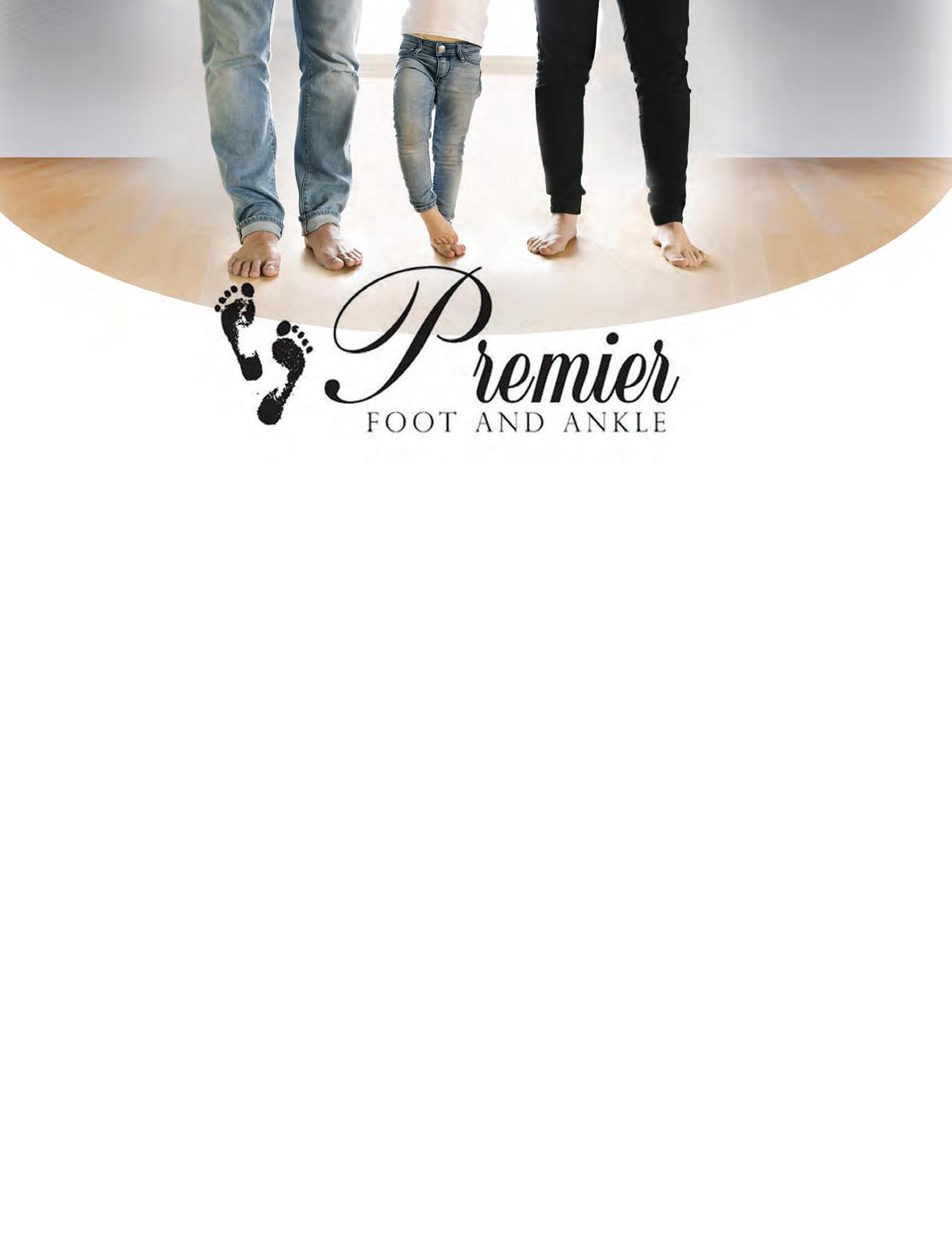

provider, Premier Foot & Ankle is here to help patients alleviate their foot and ankle pain resulting from various foot disorders and injuries such as sports and diabetic foot care.
To move toward your pain-free lifestyle with an individualized comprehensive treatment plan, visit us today at www.premierfoot.com to schedule your appointment!
